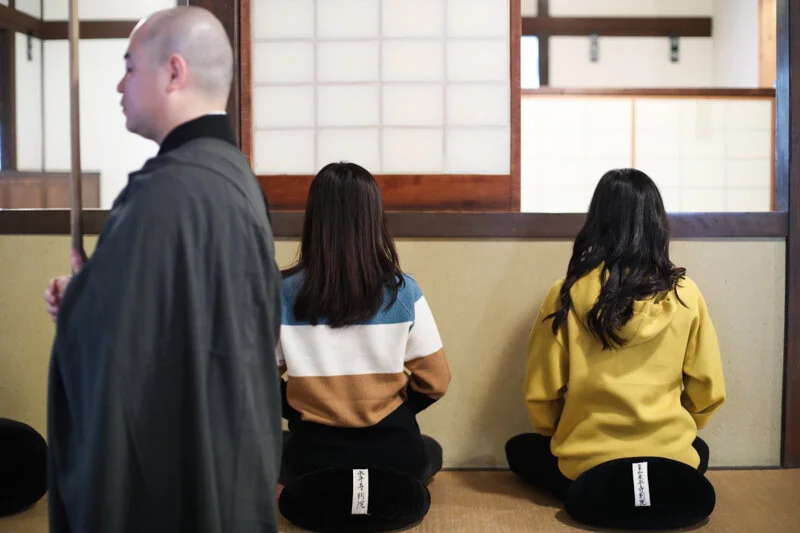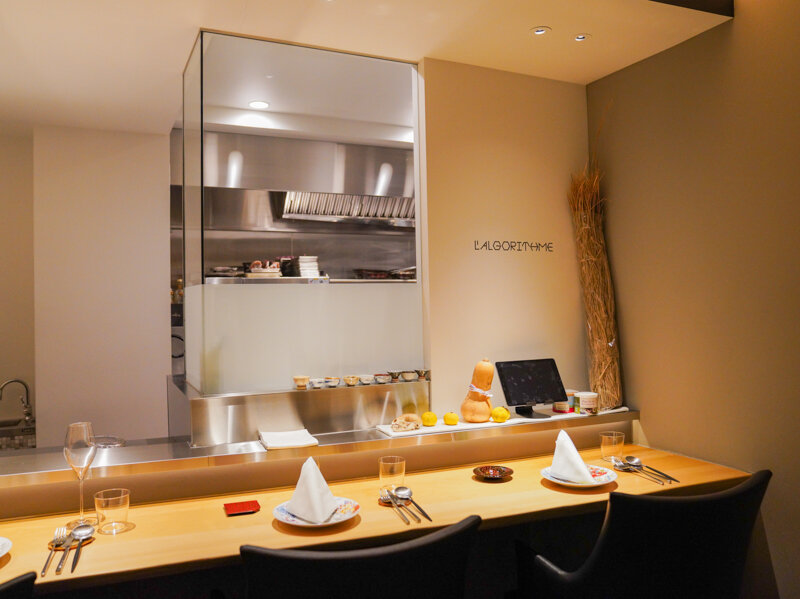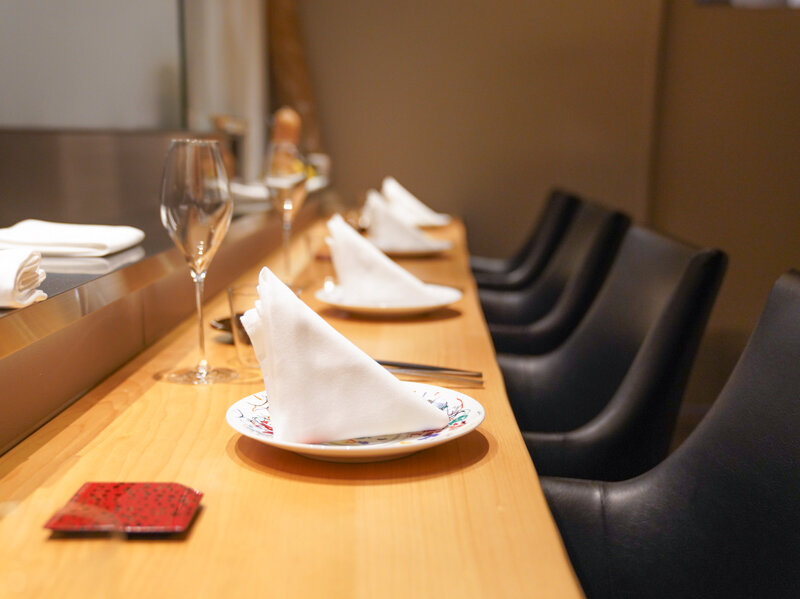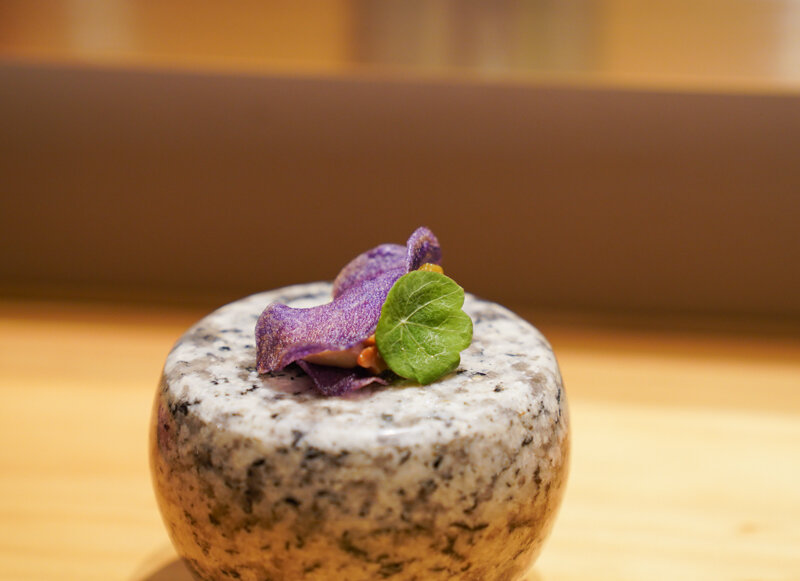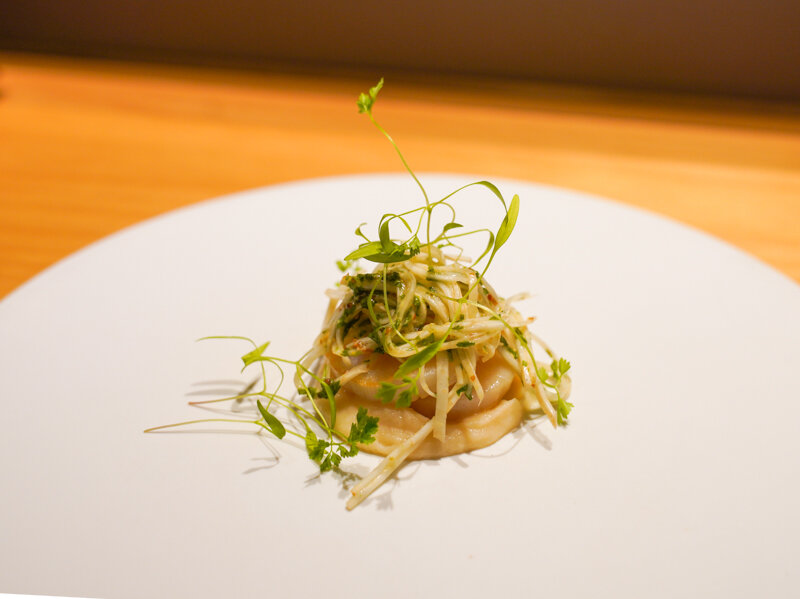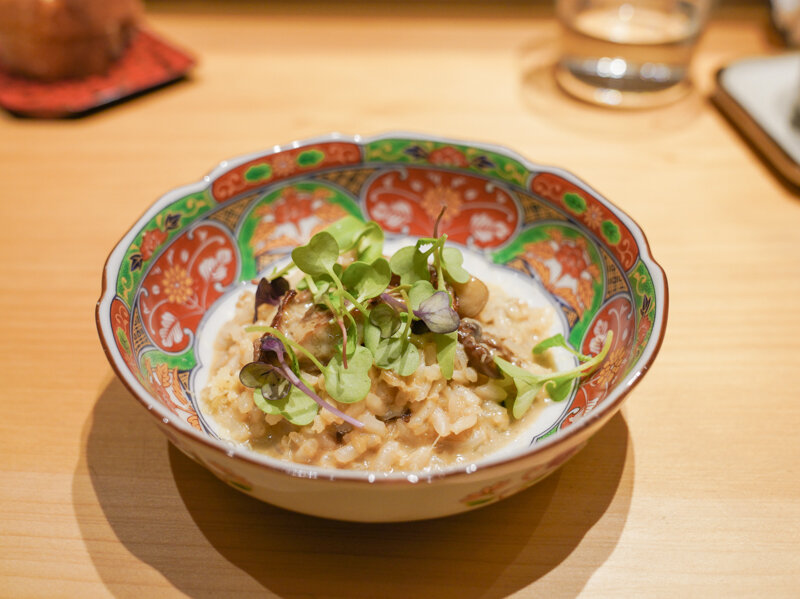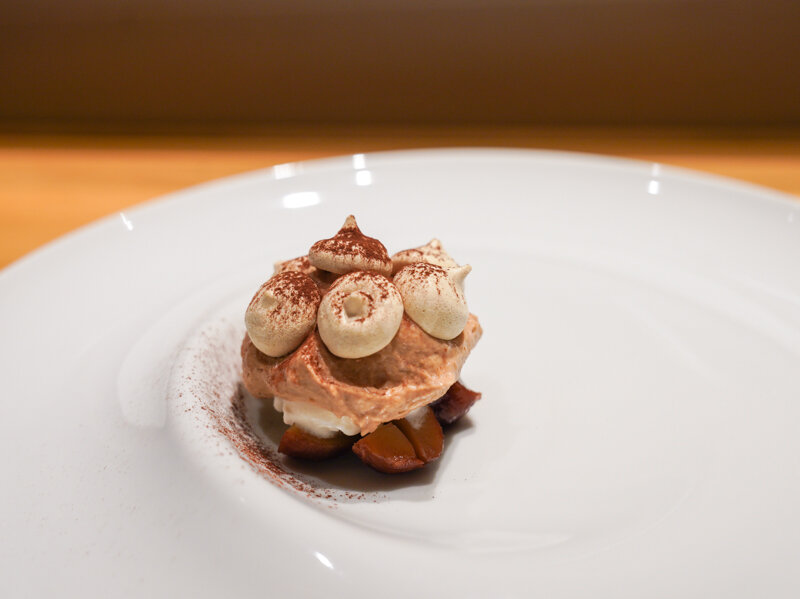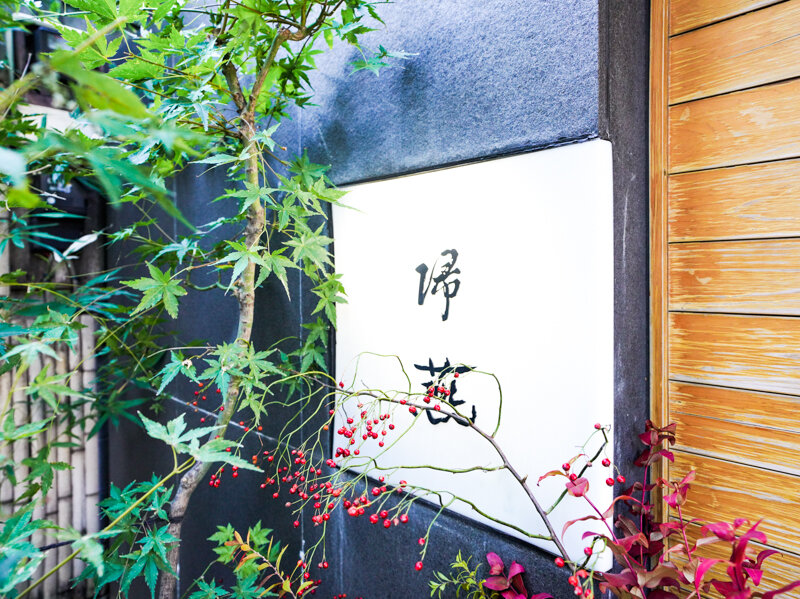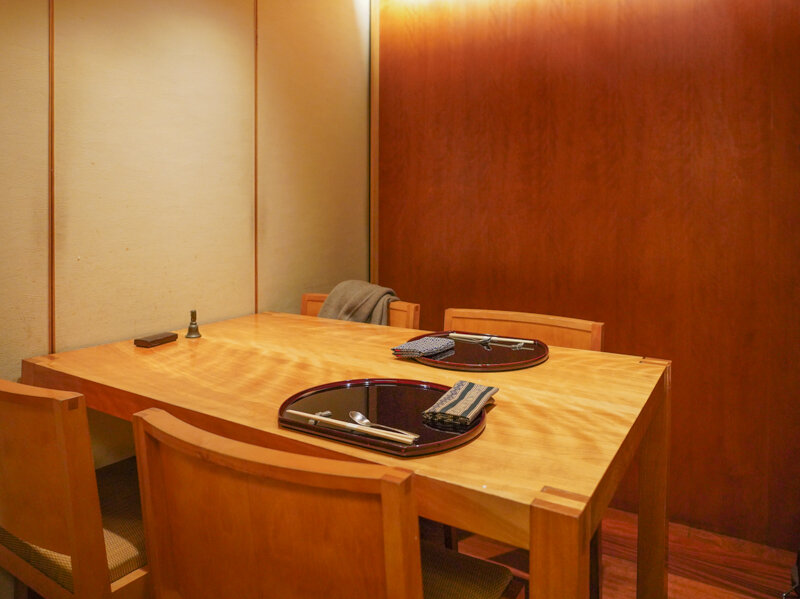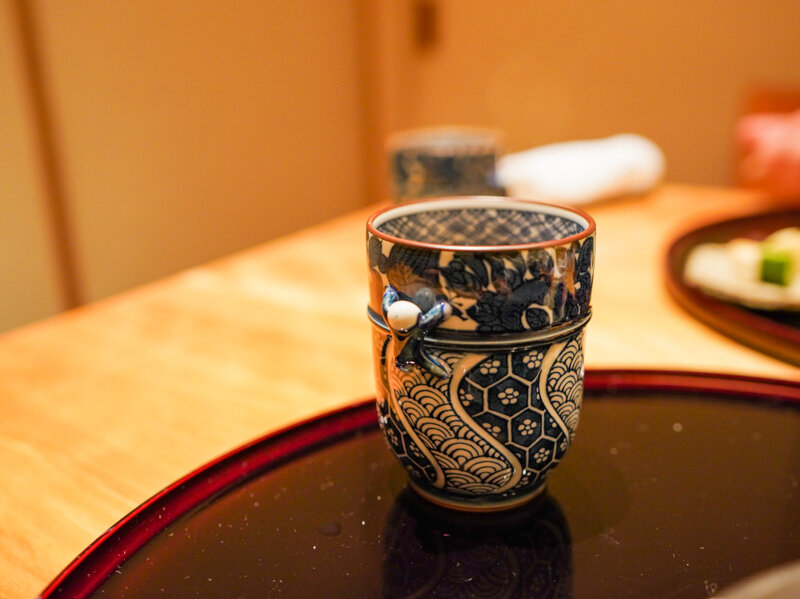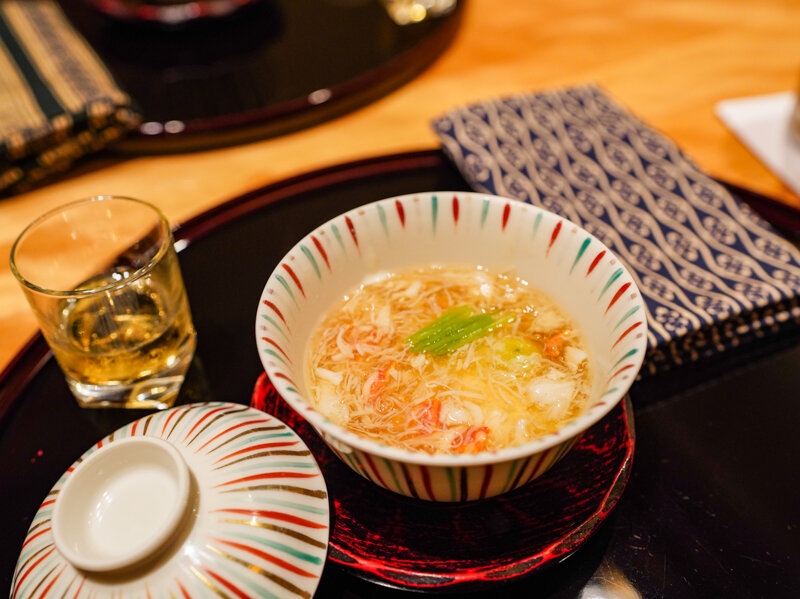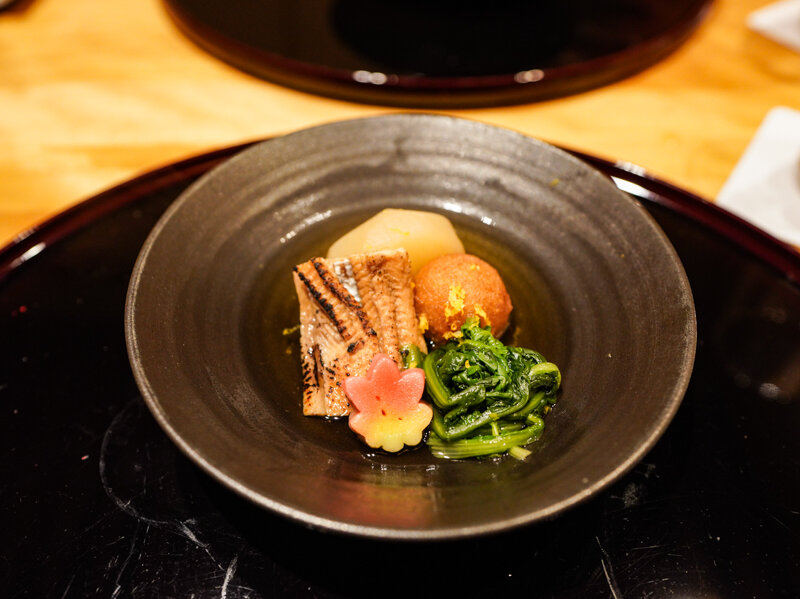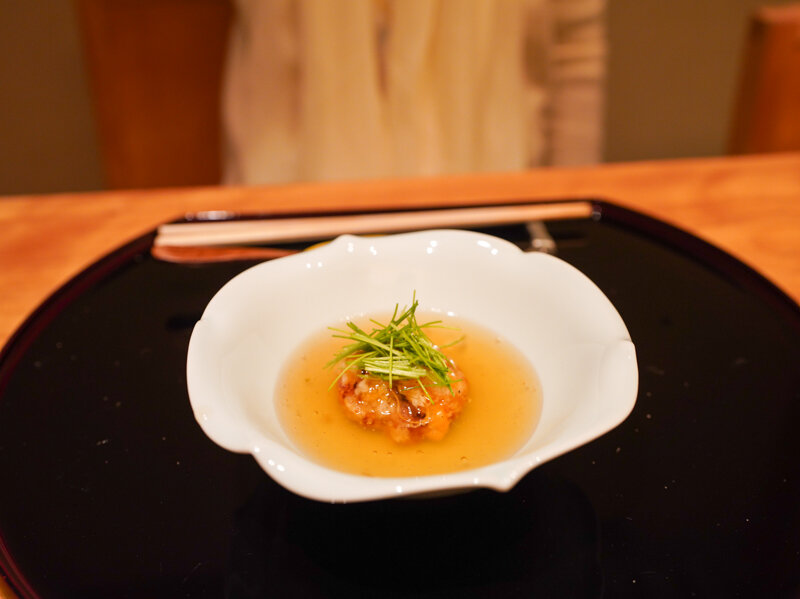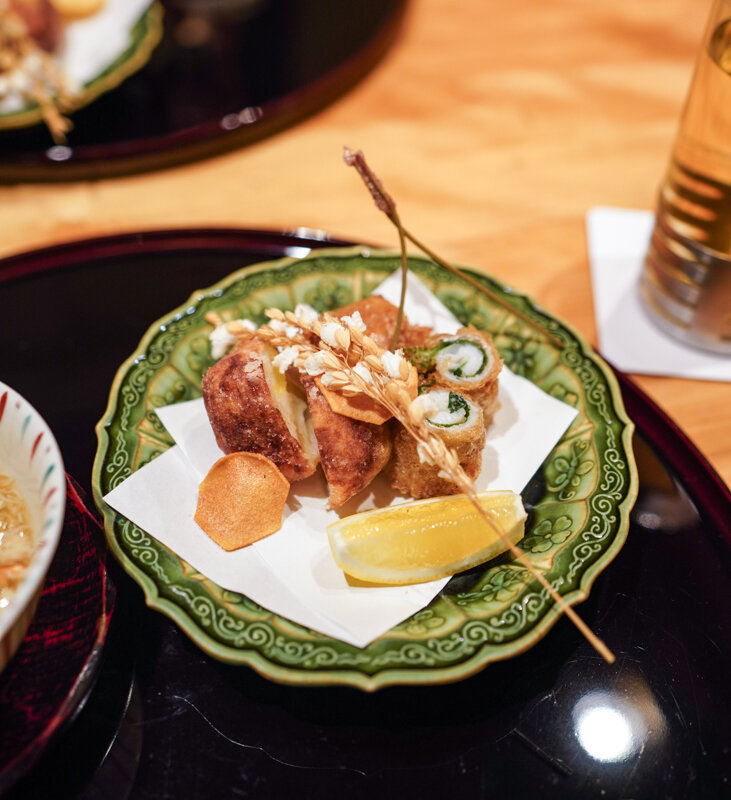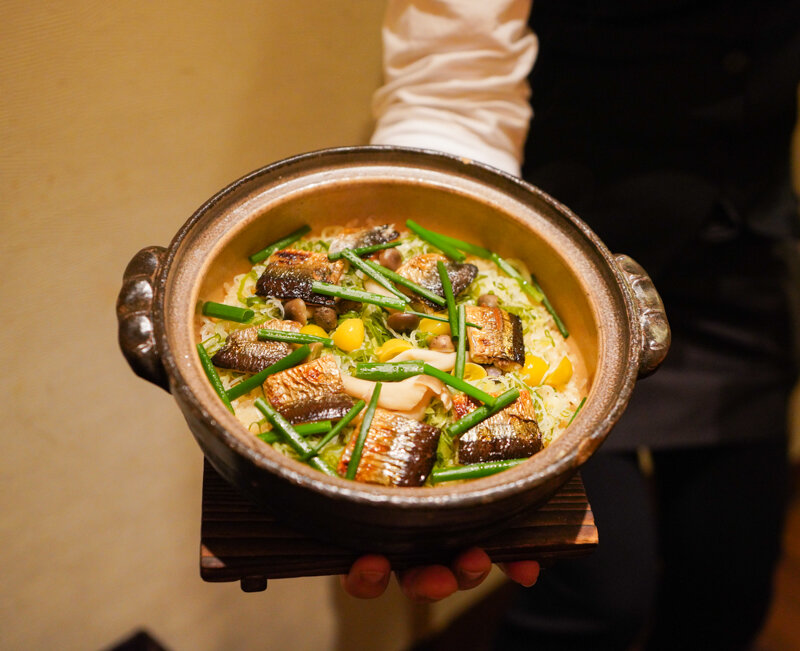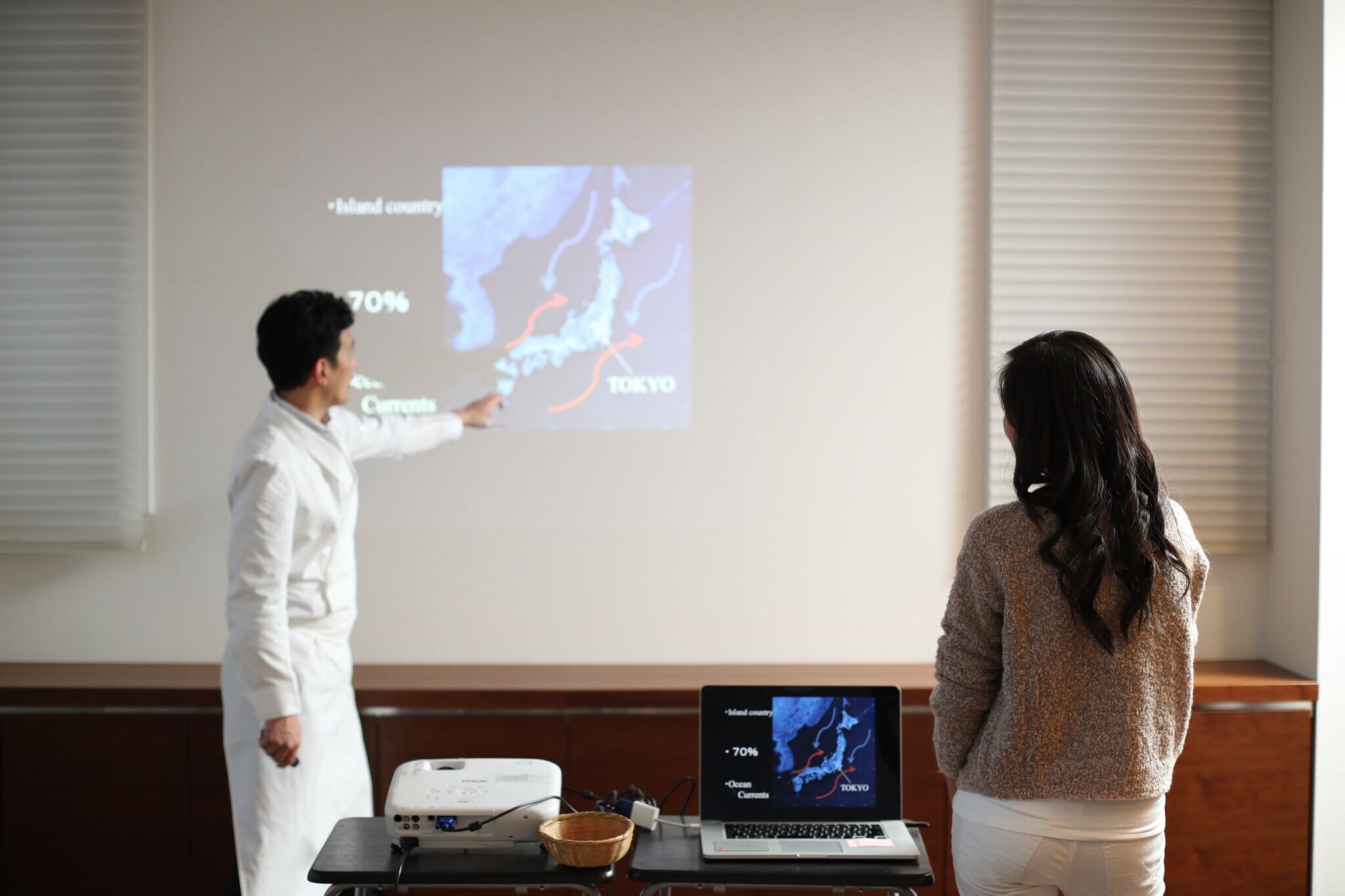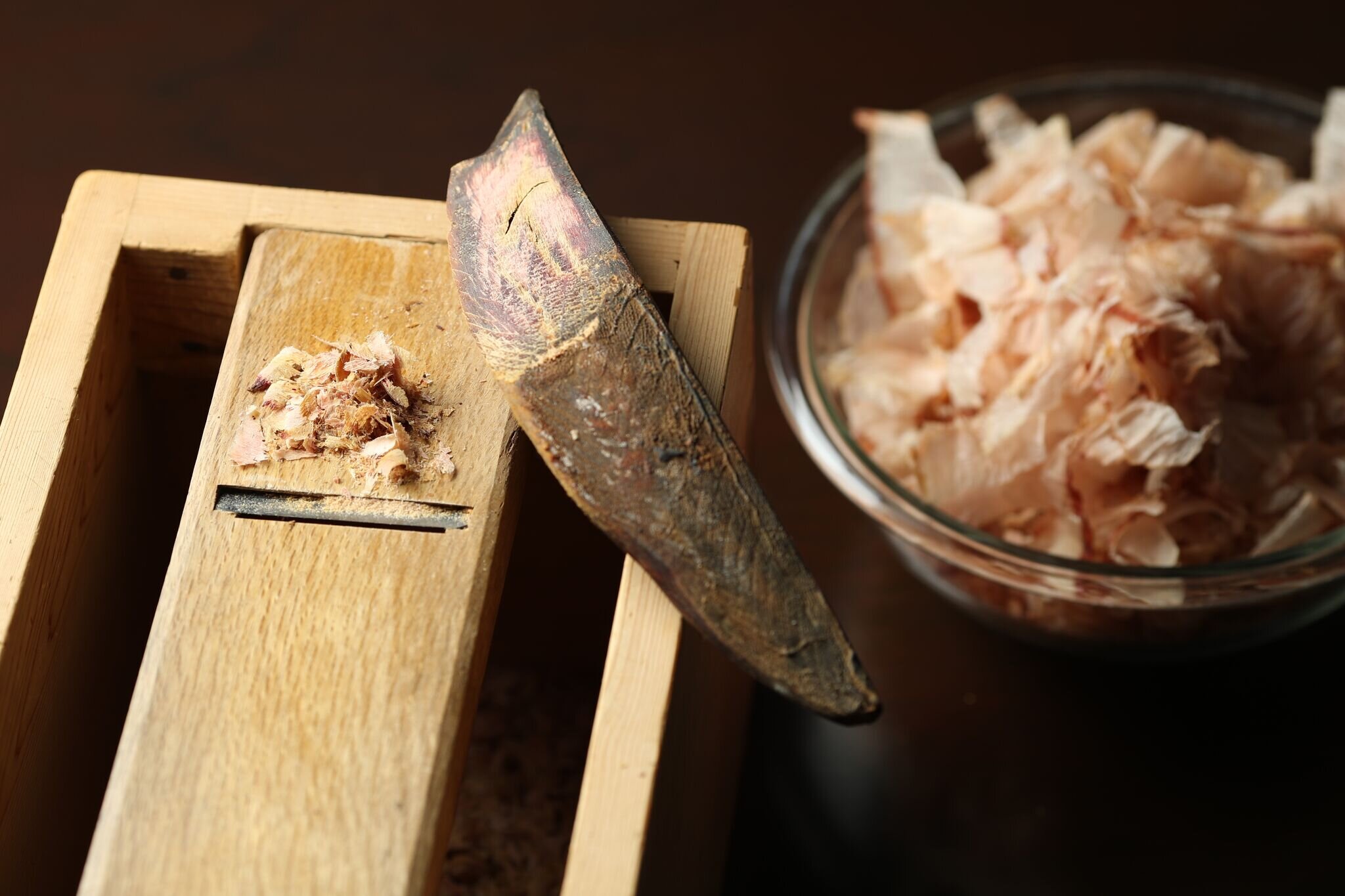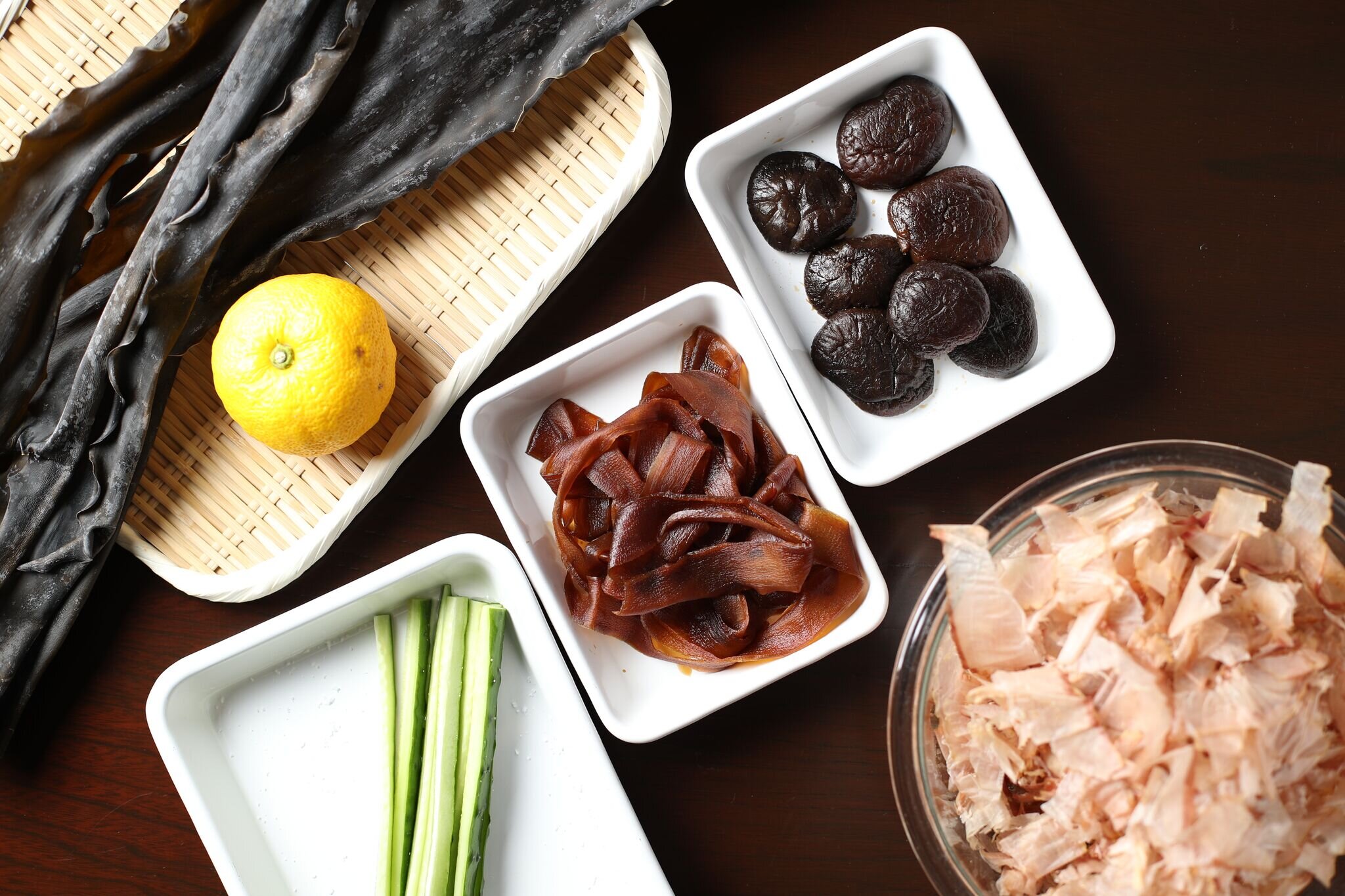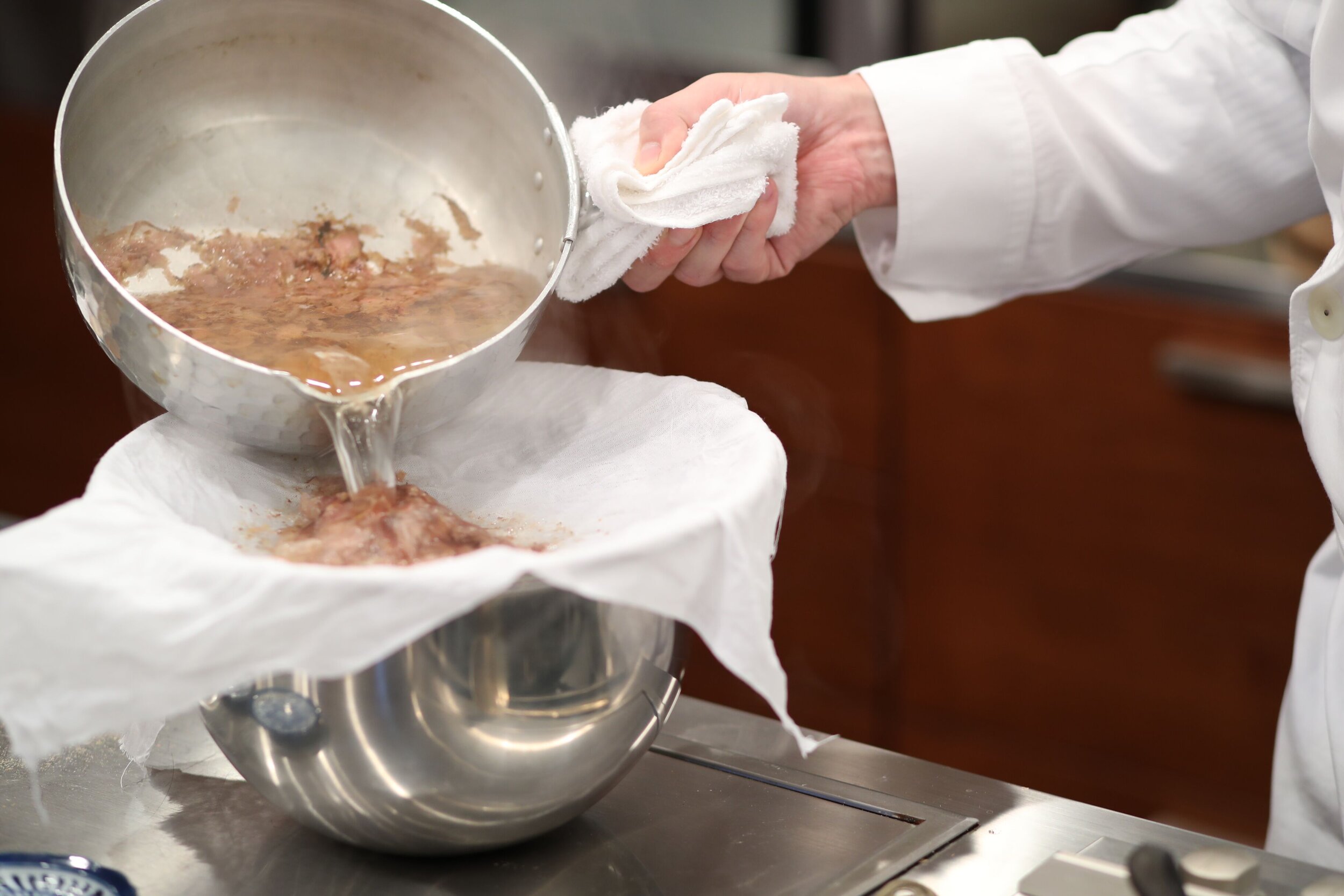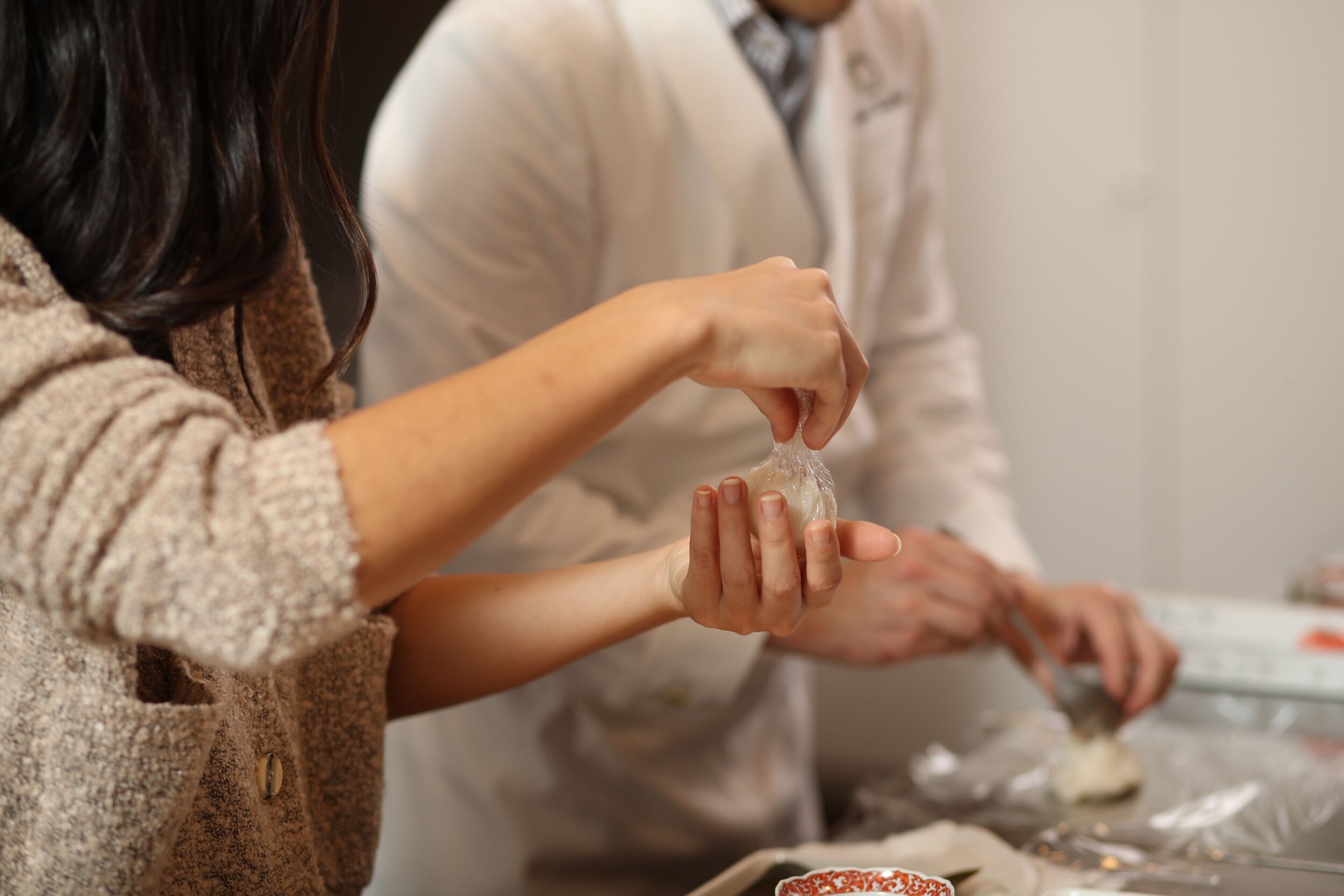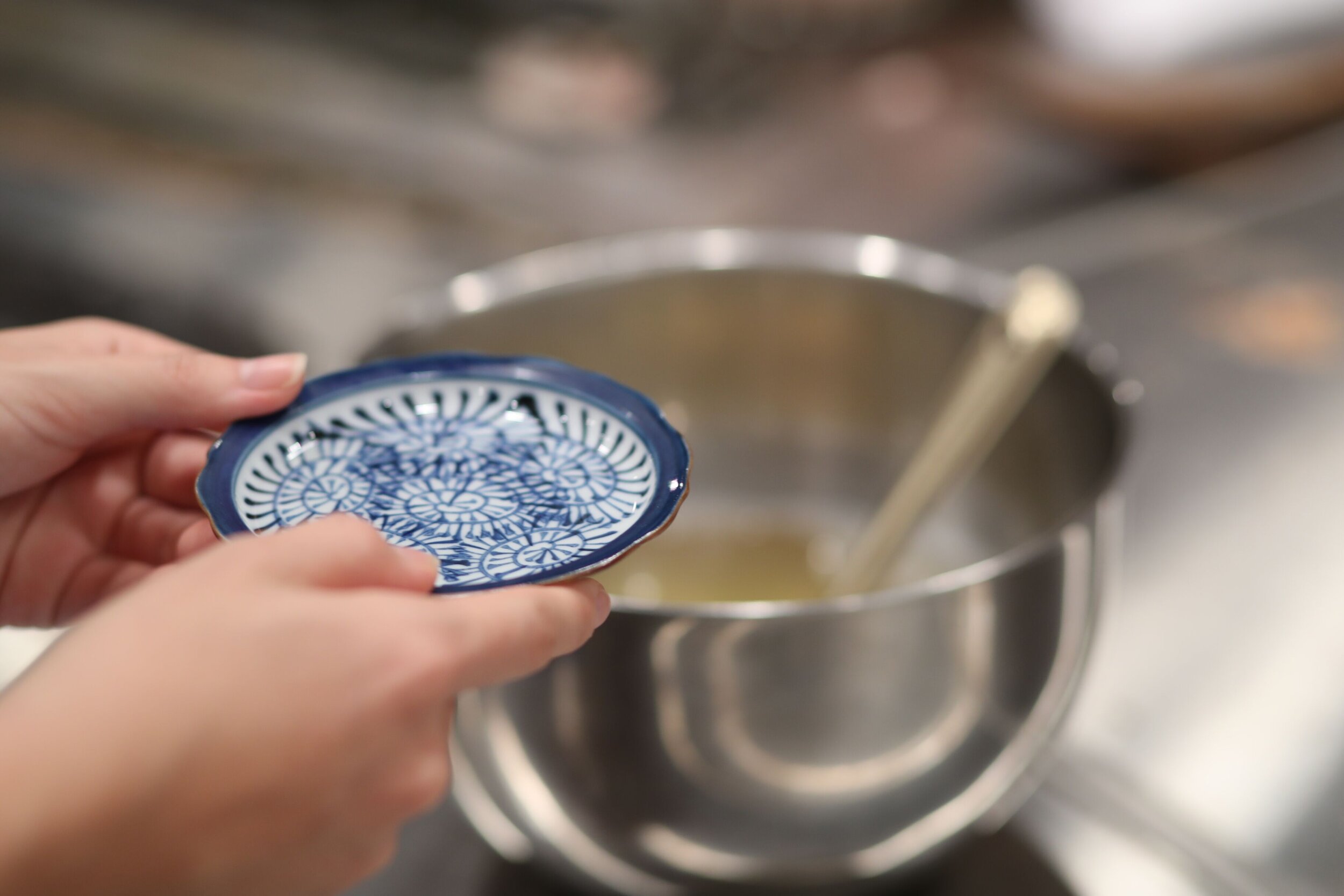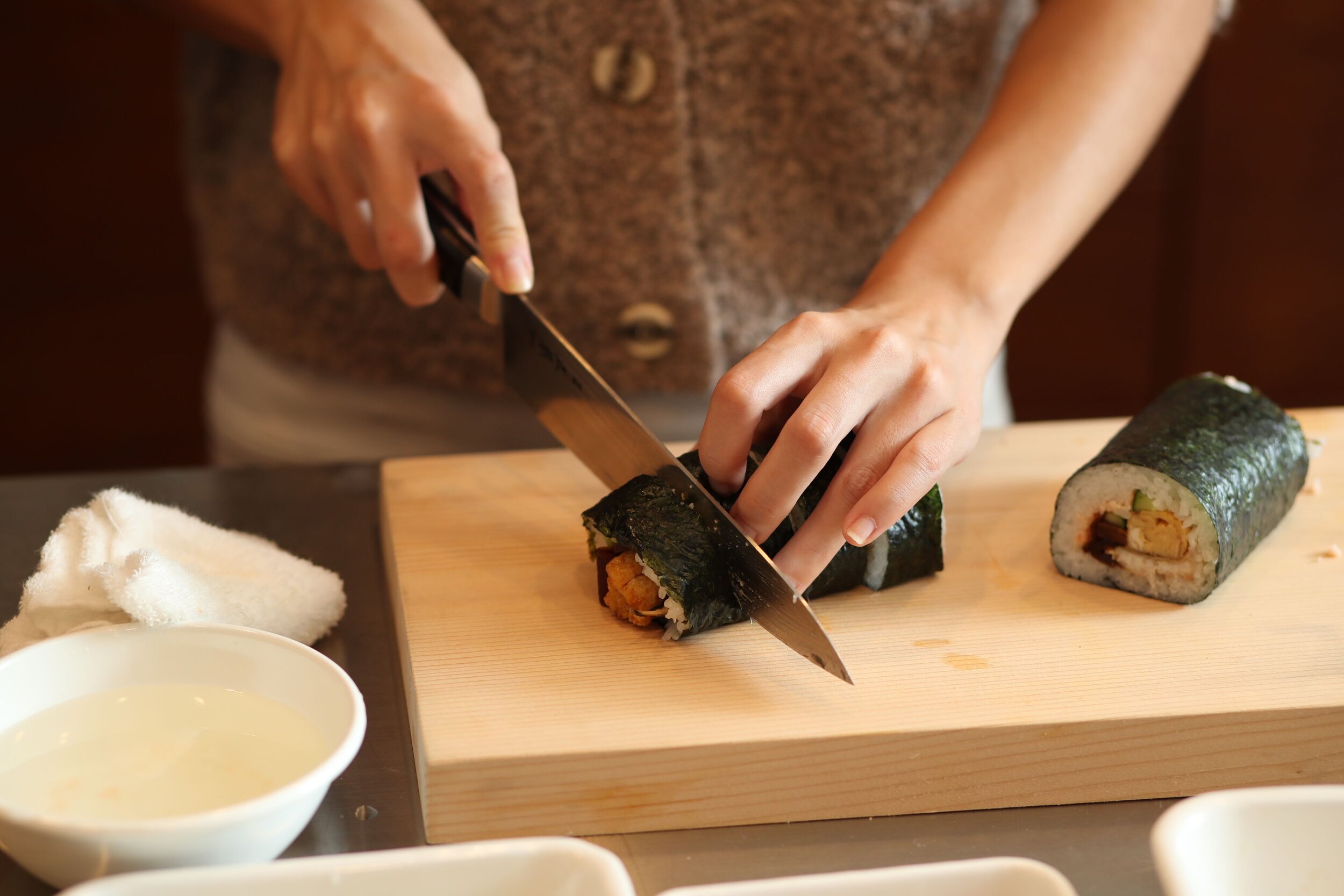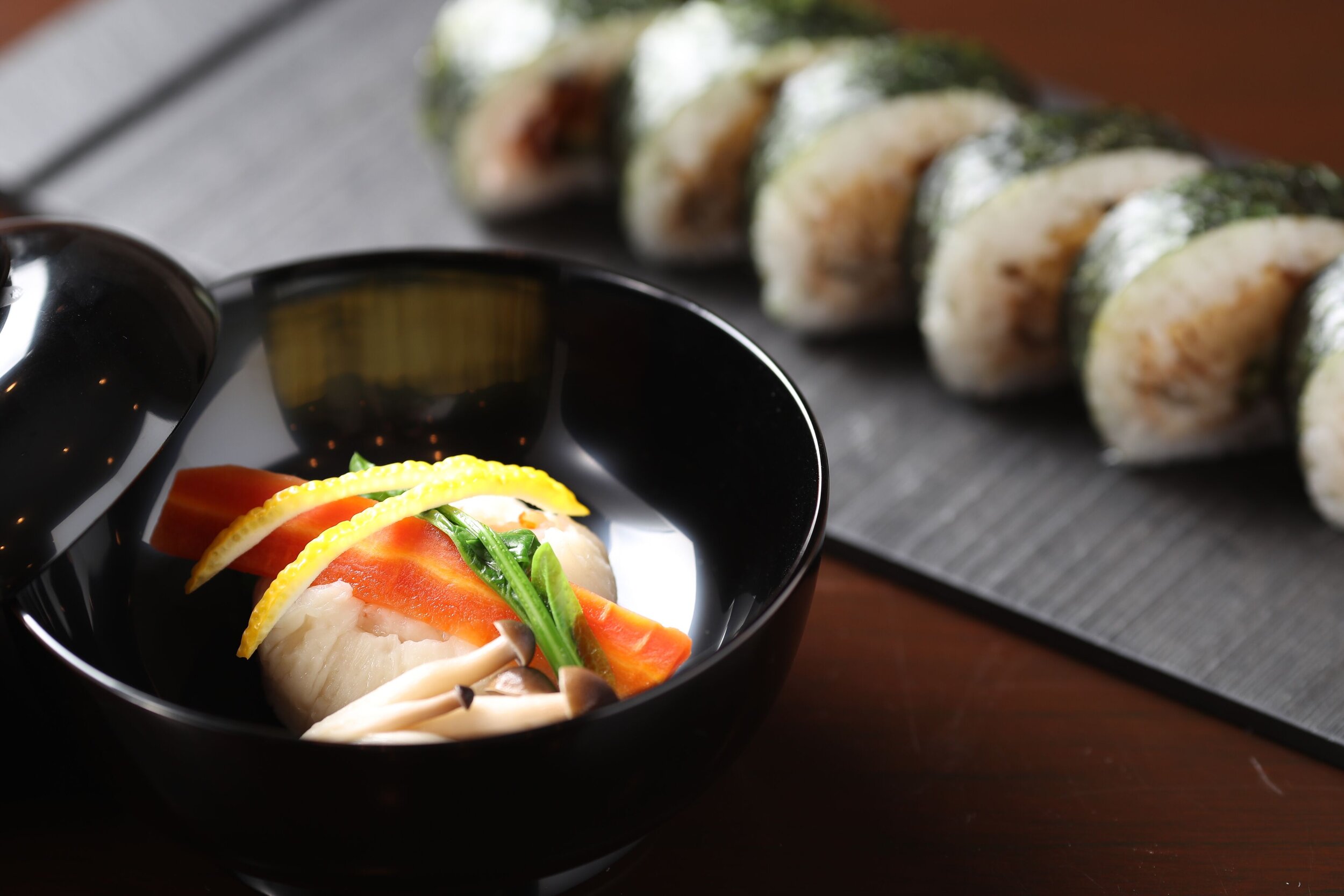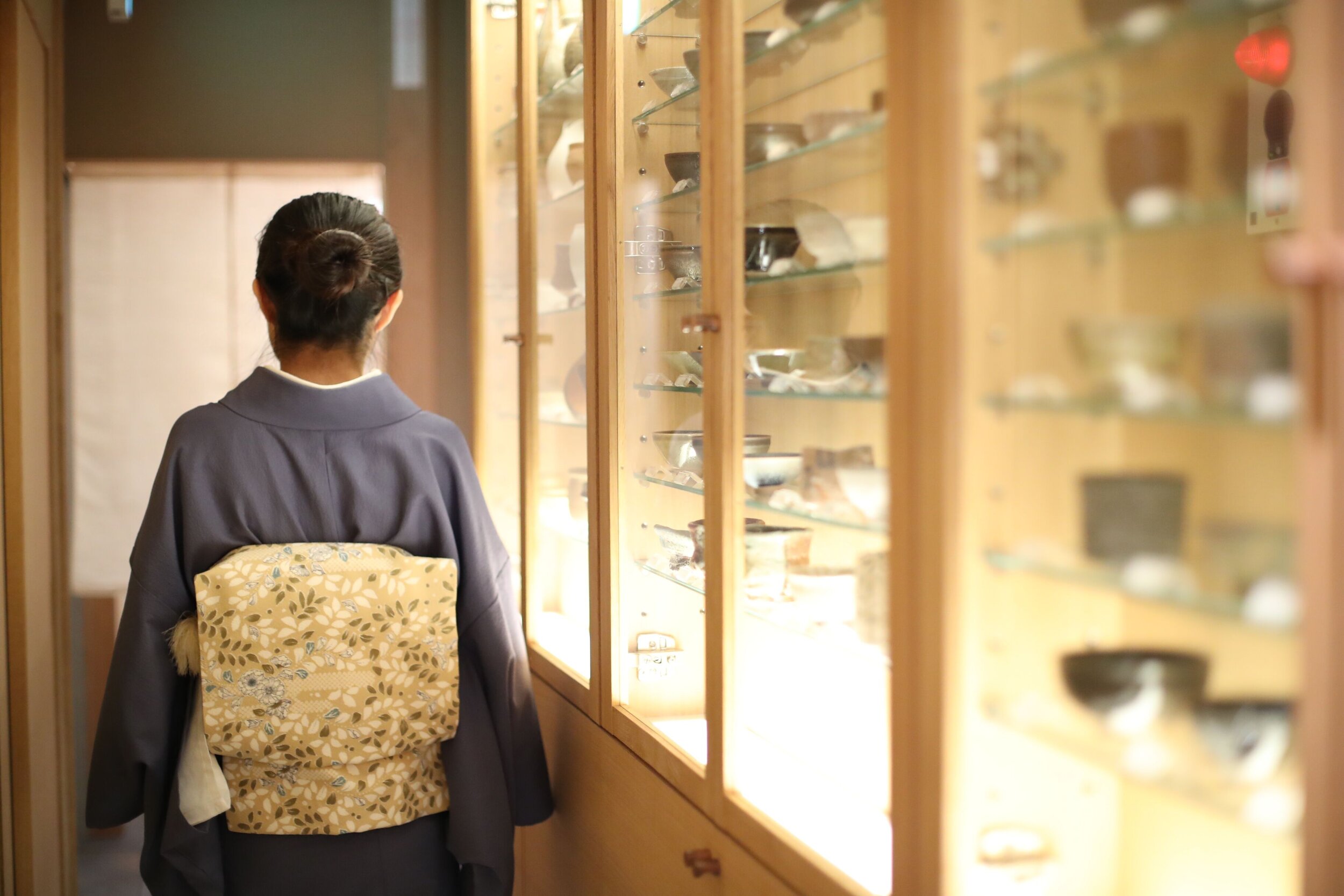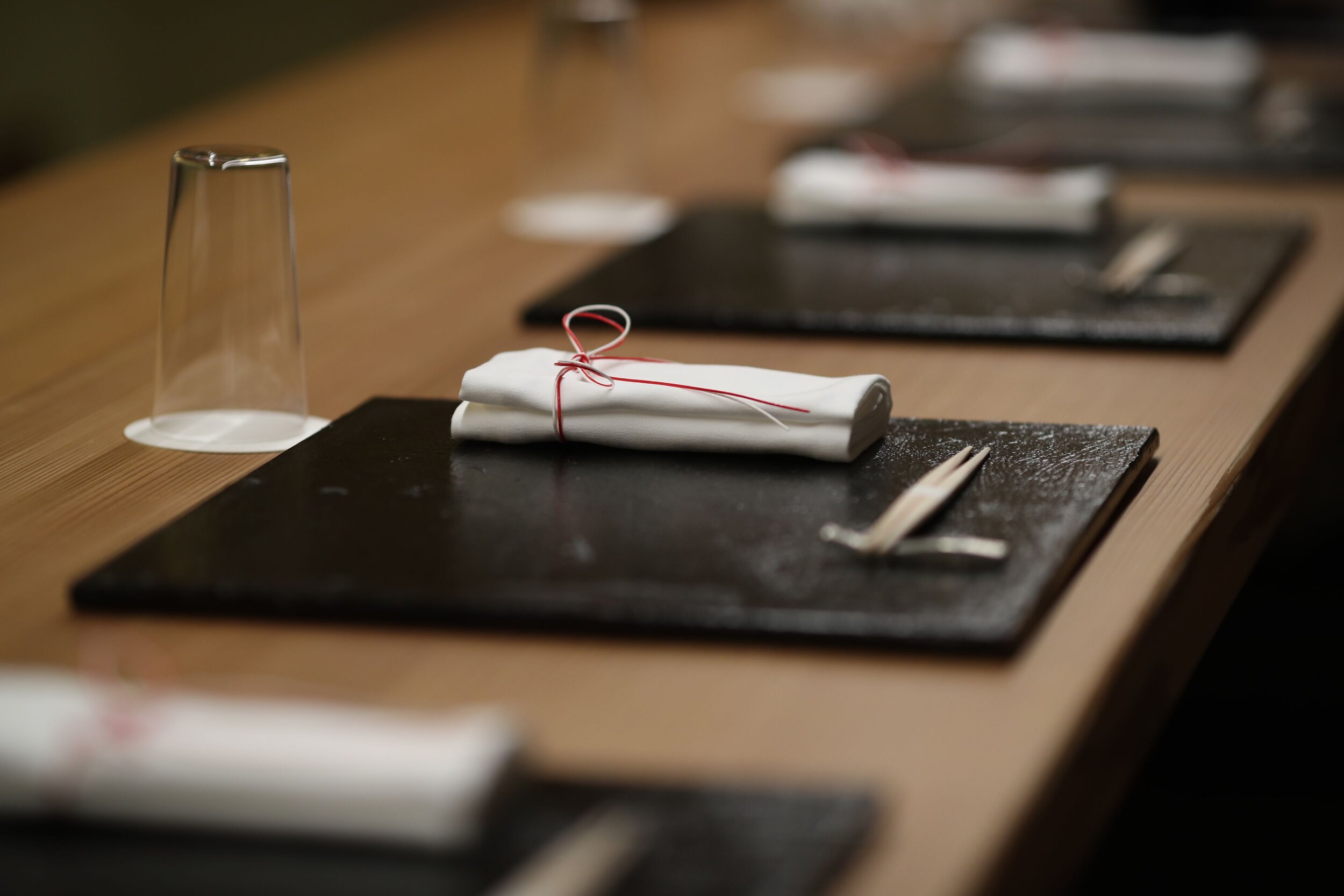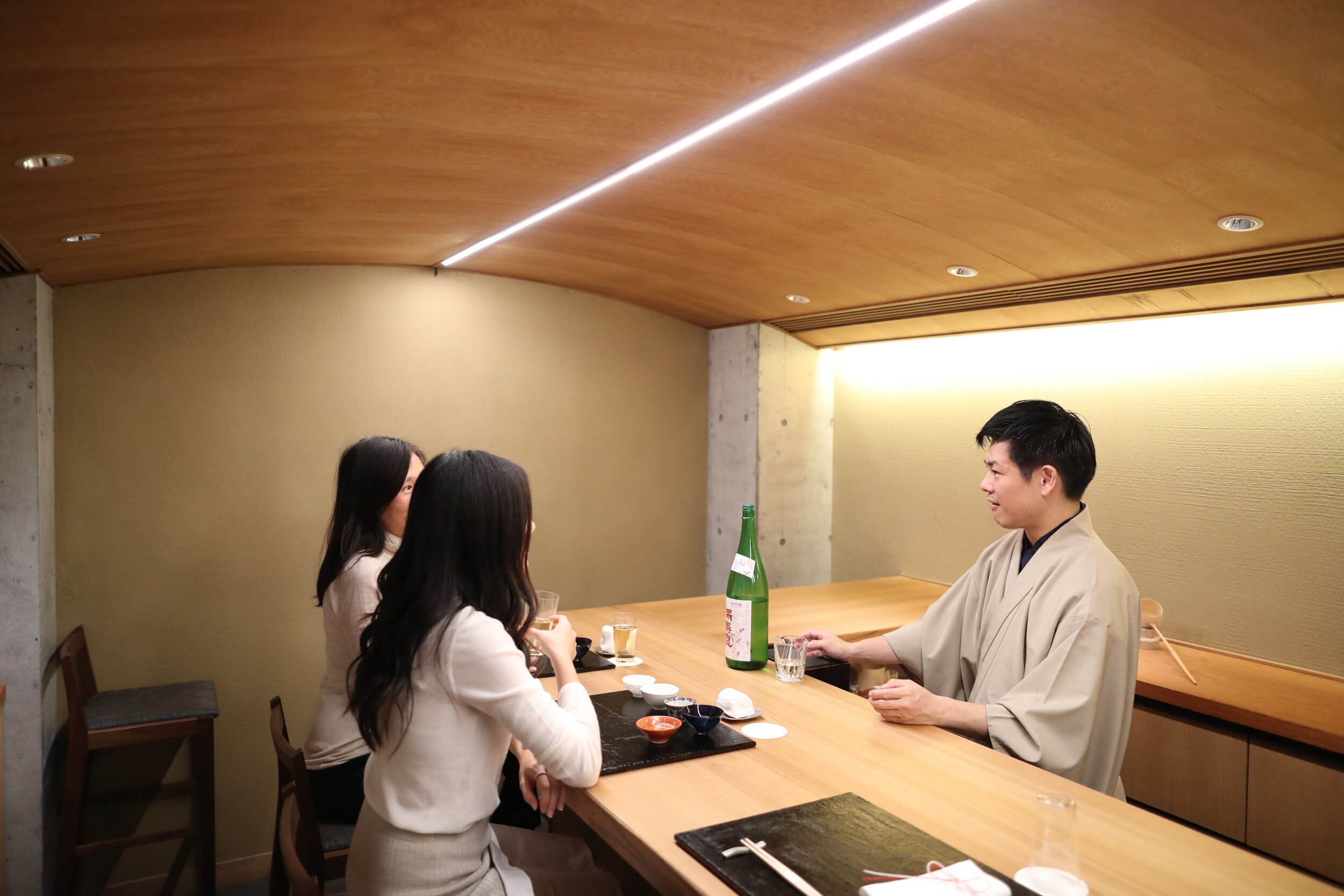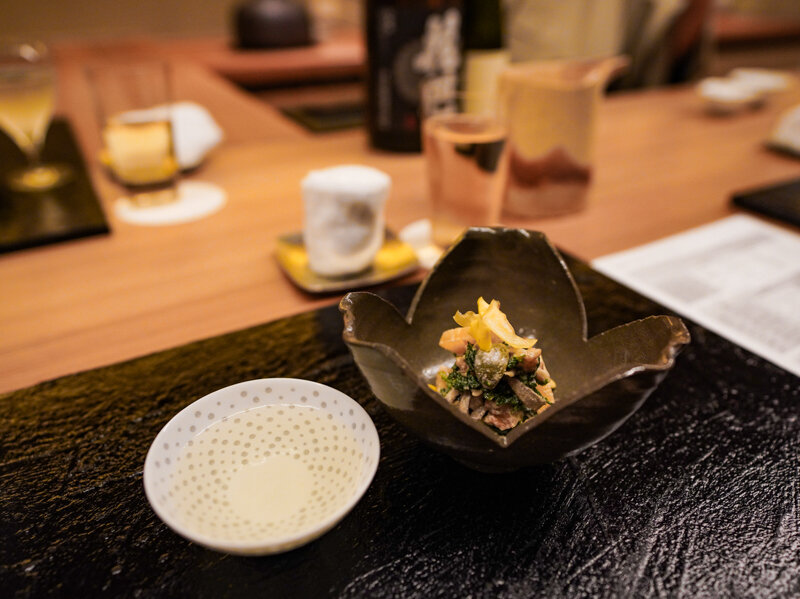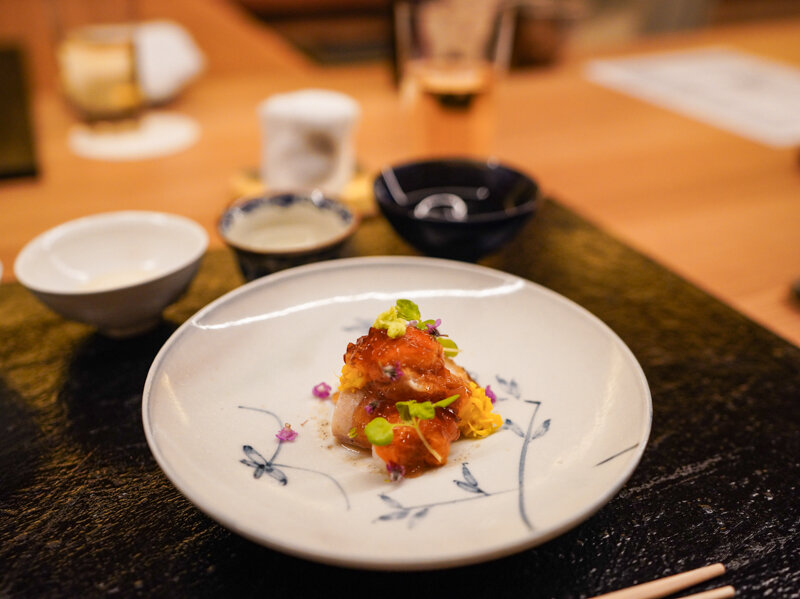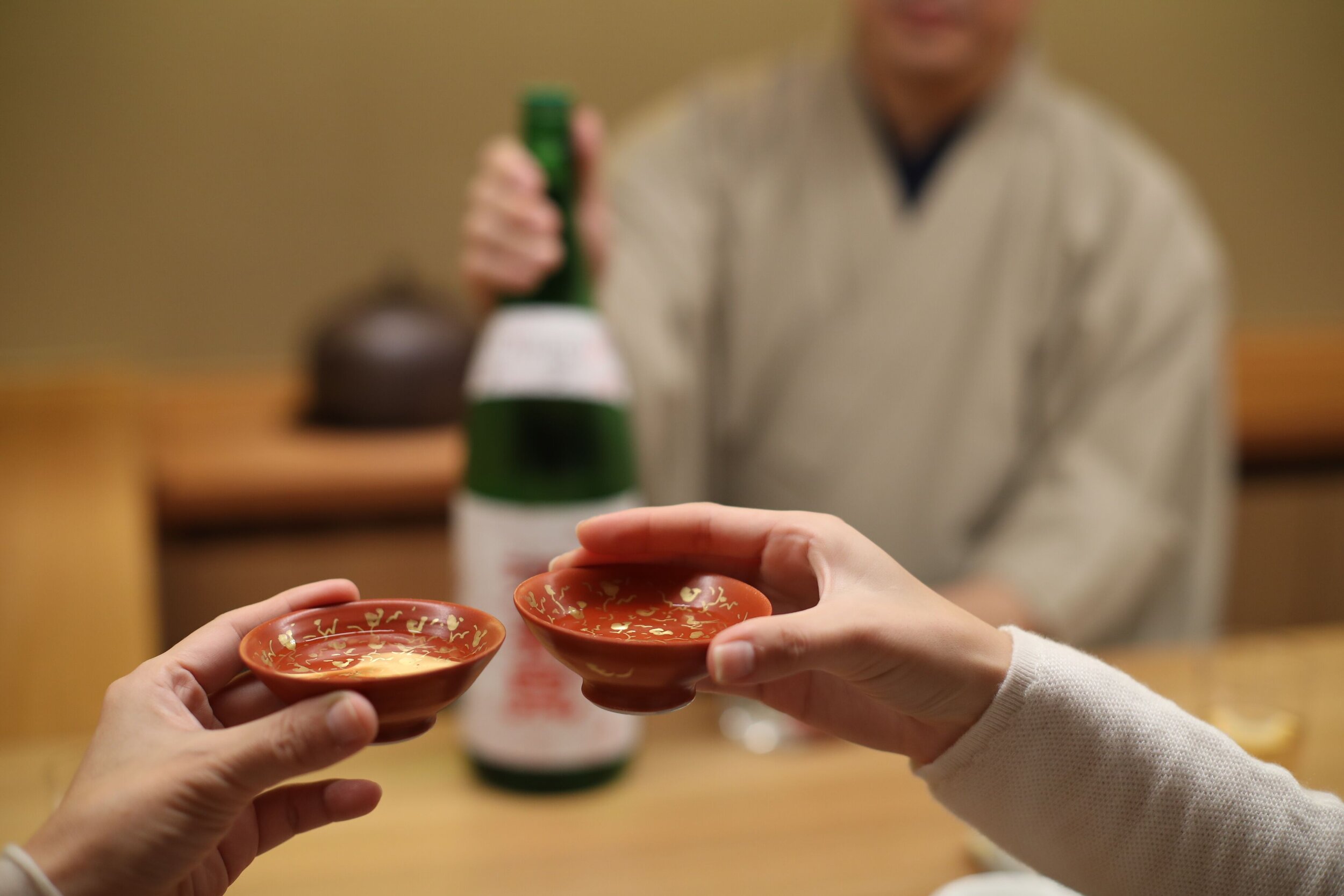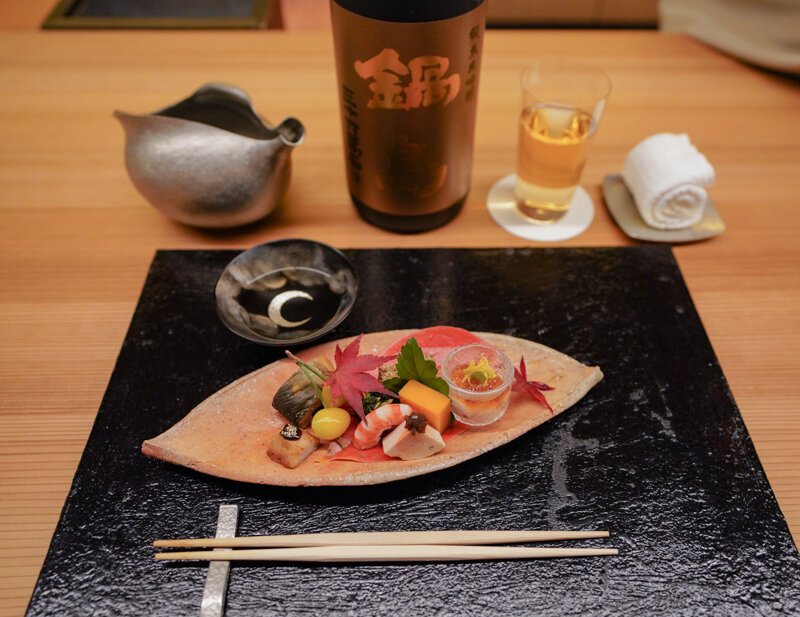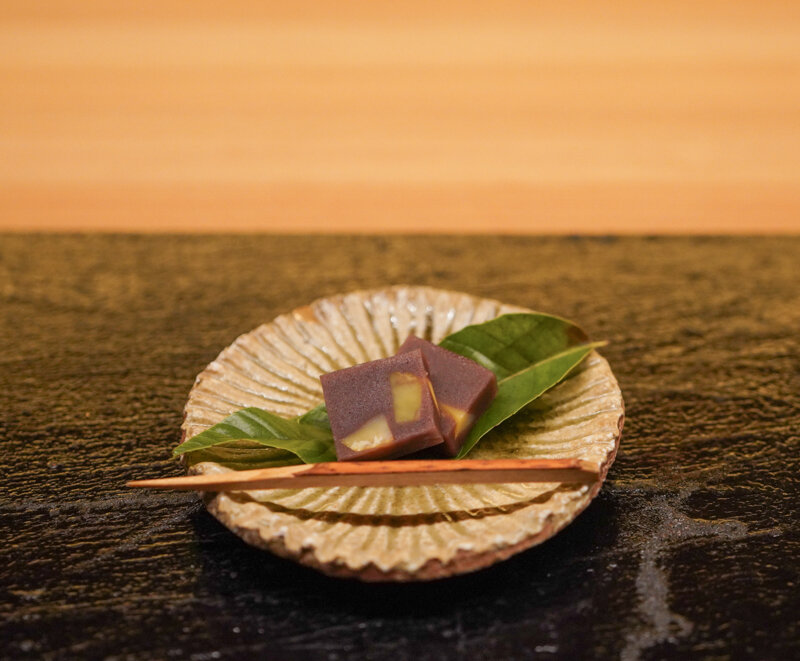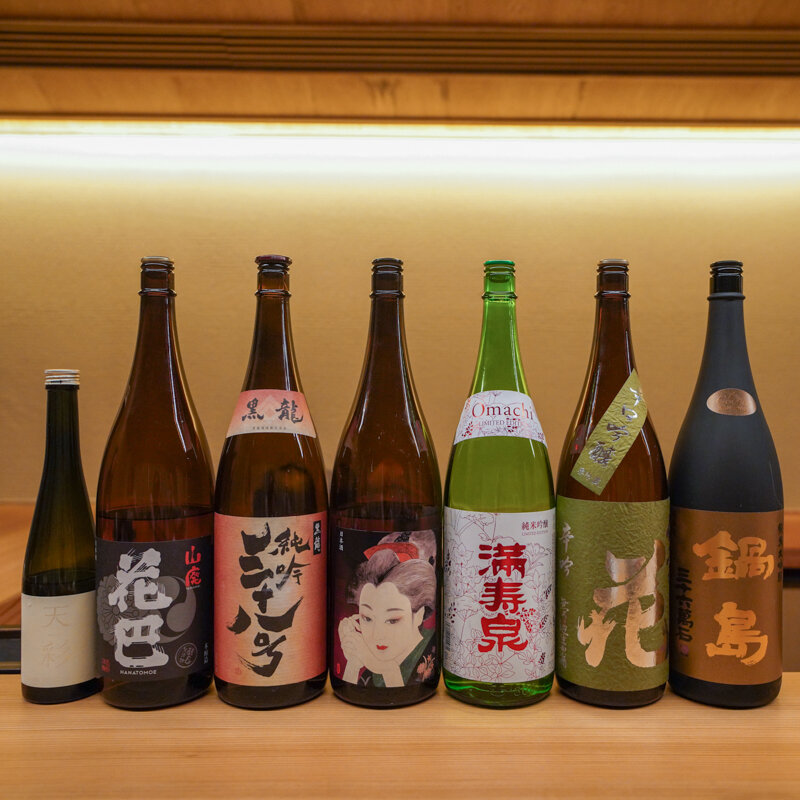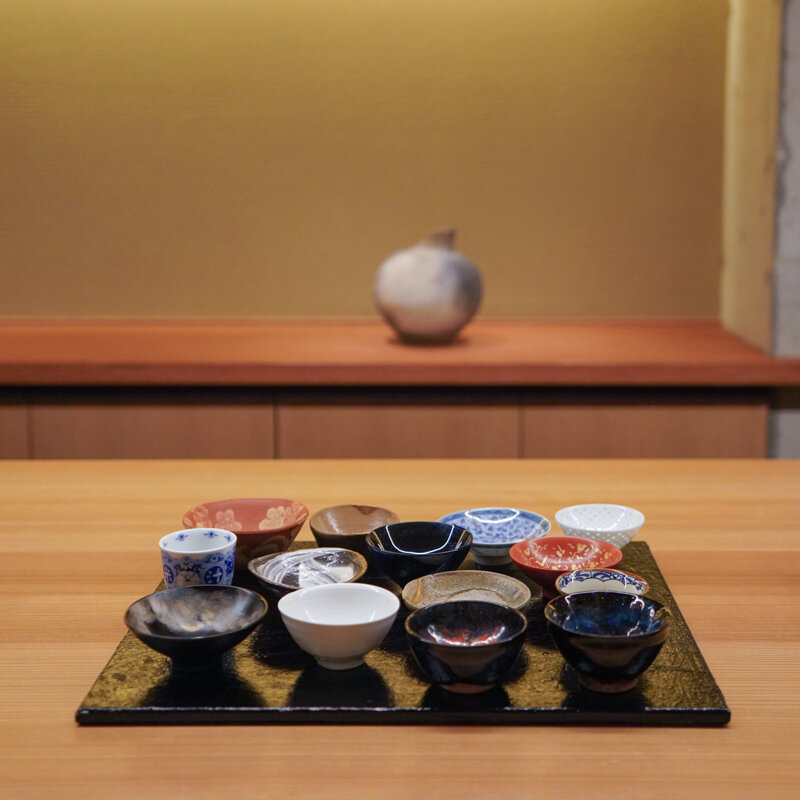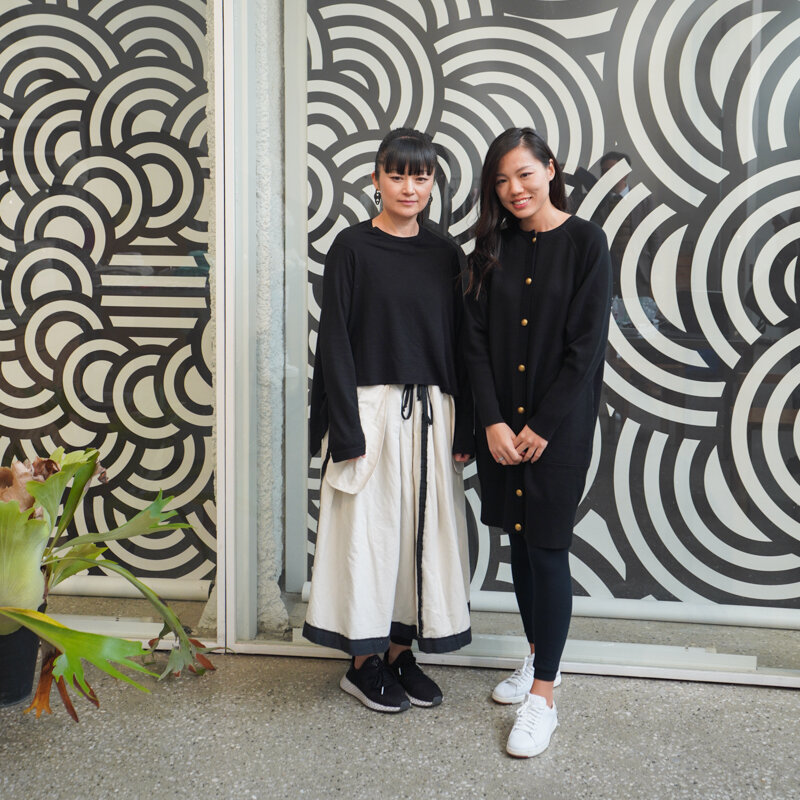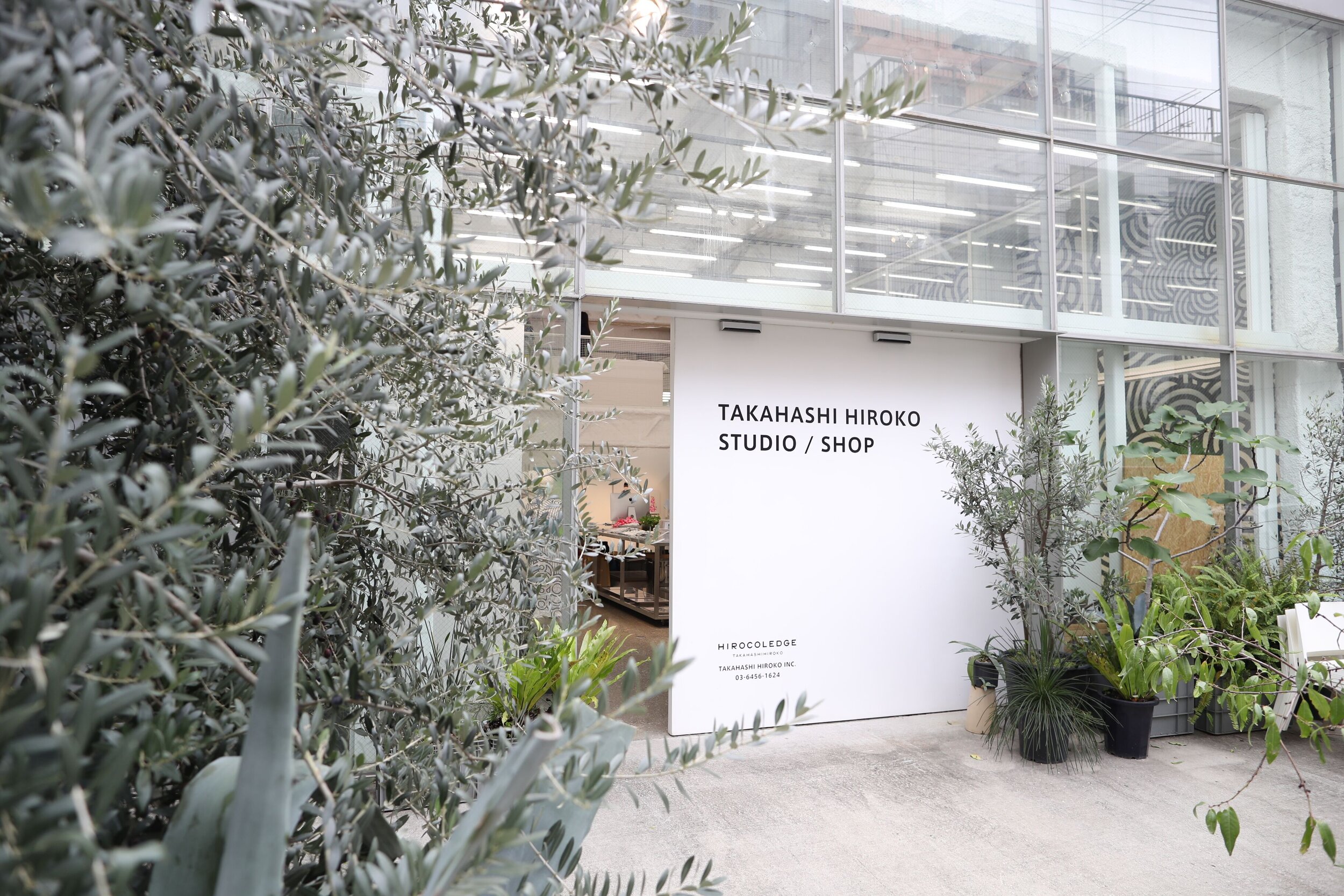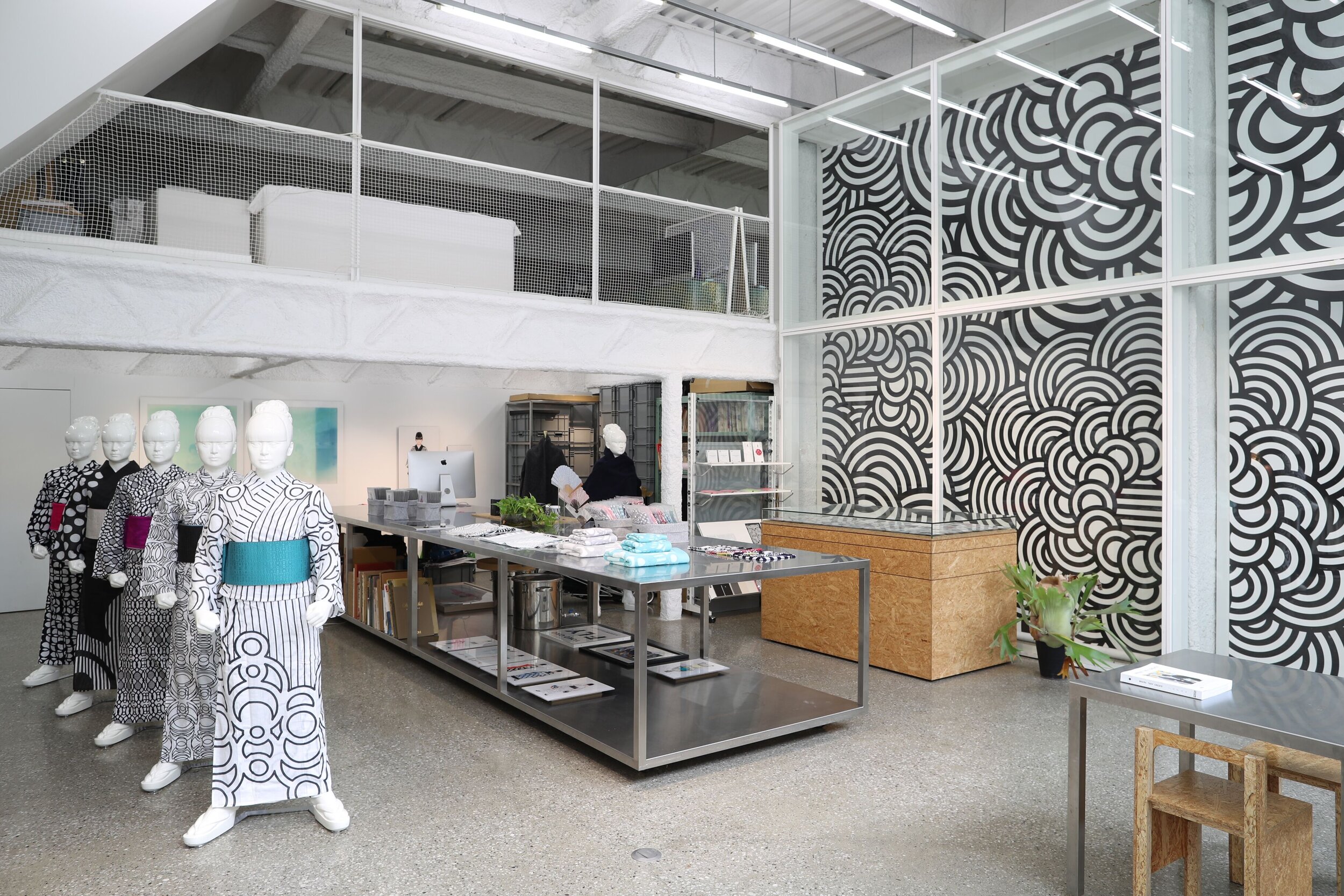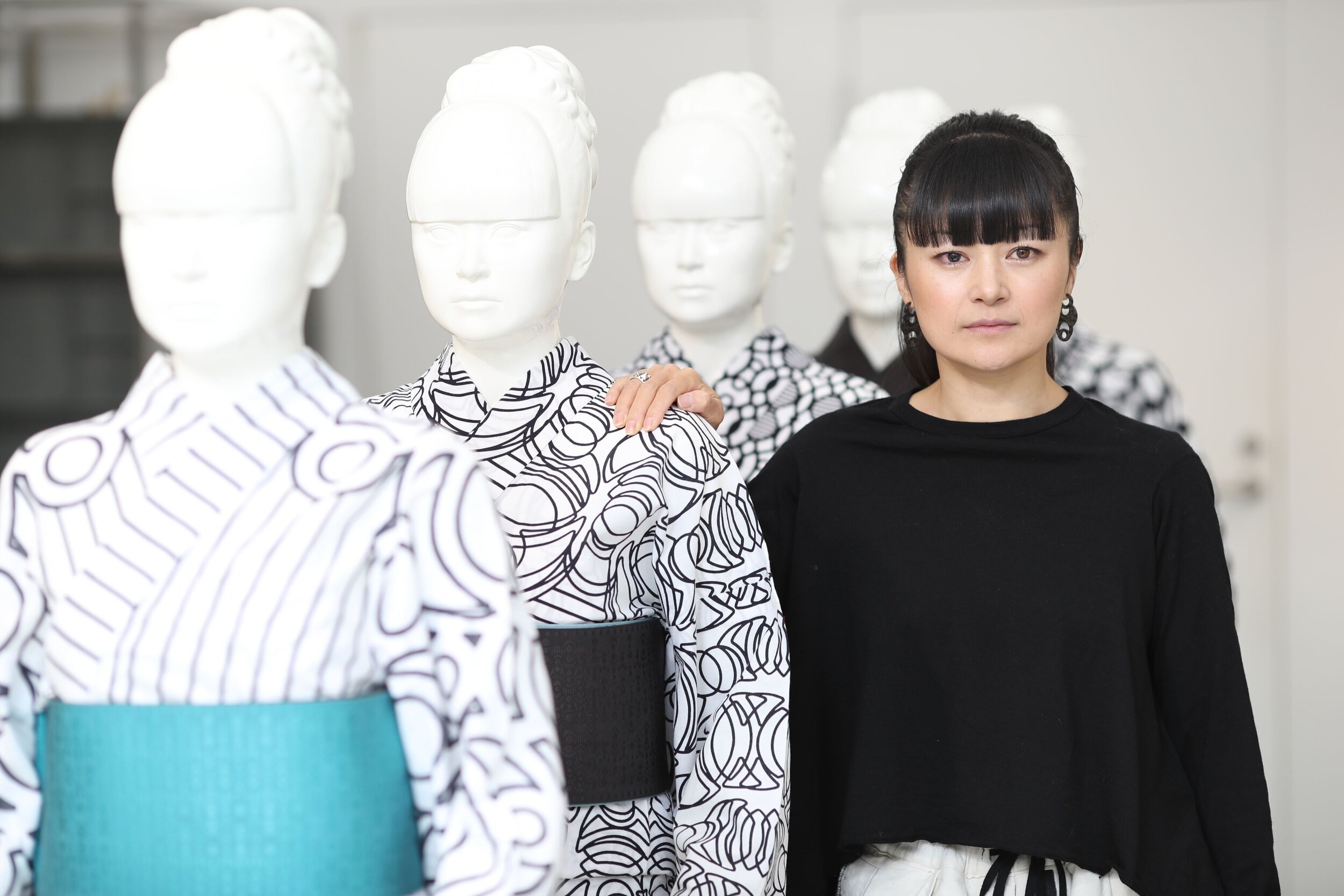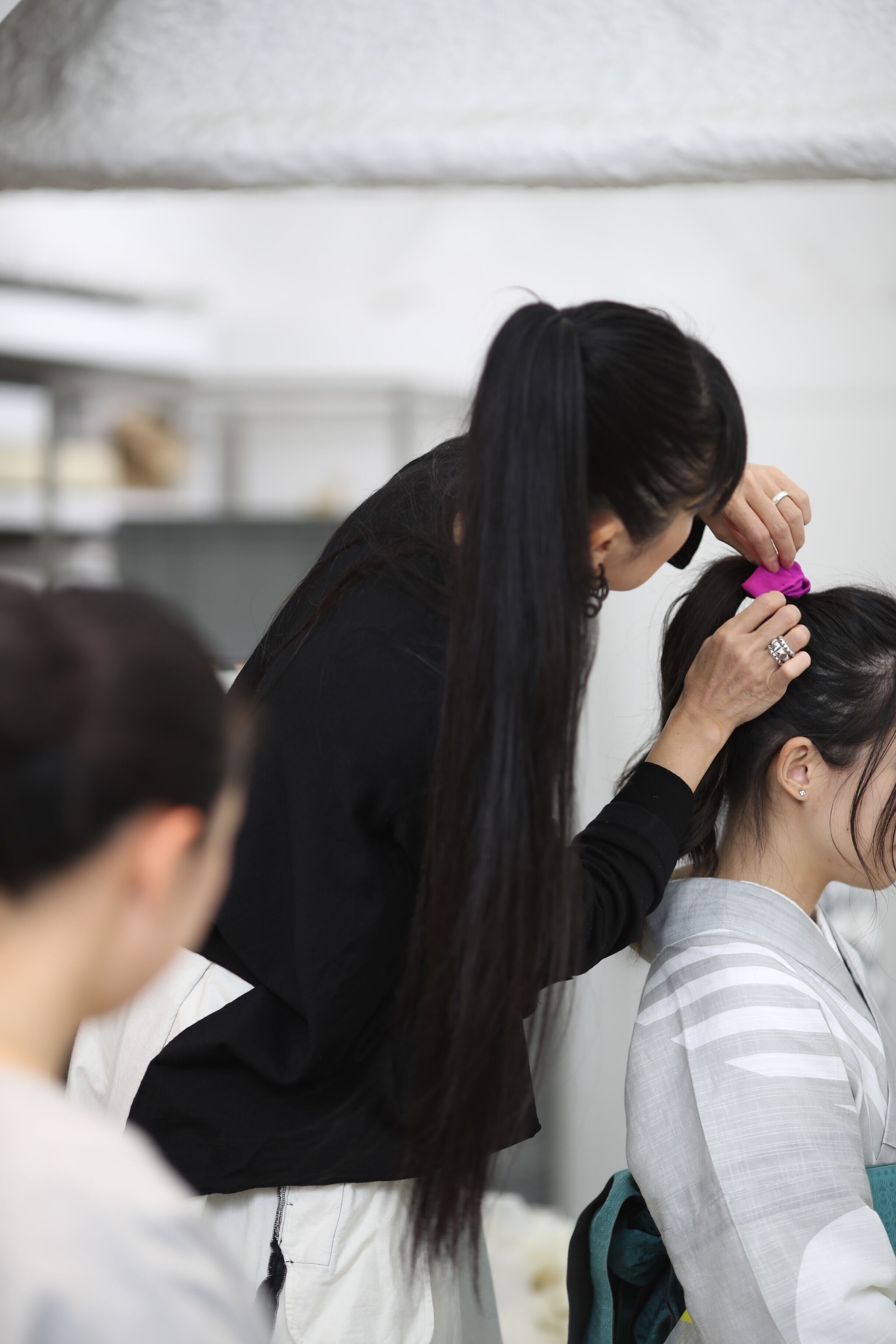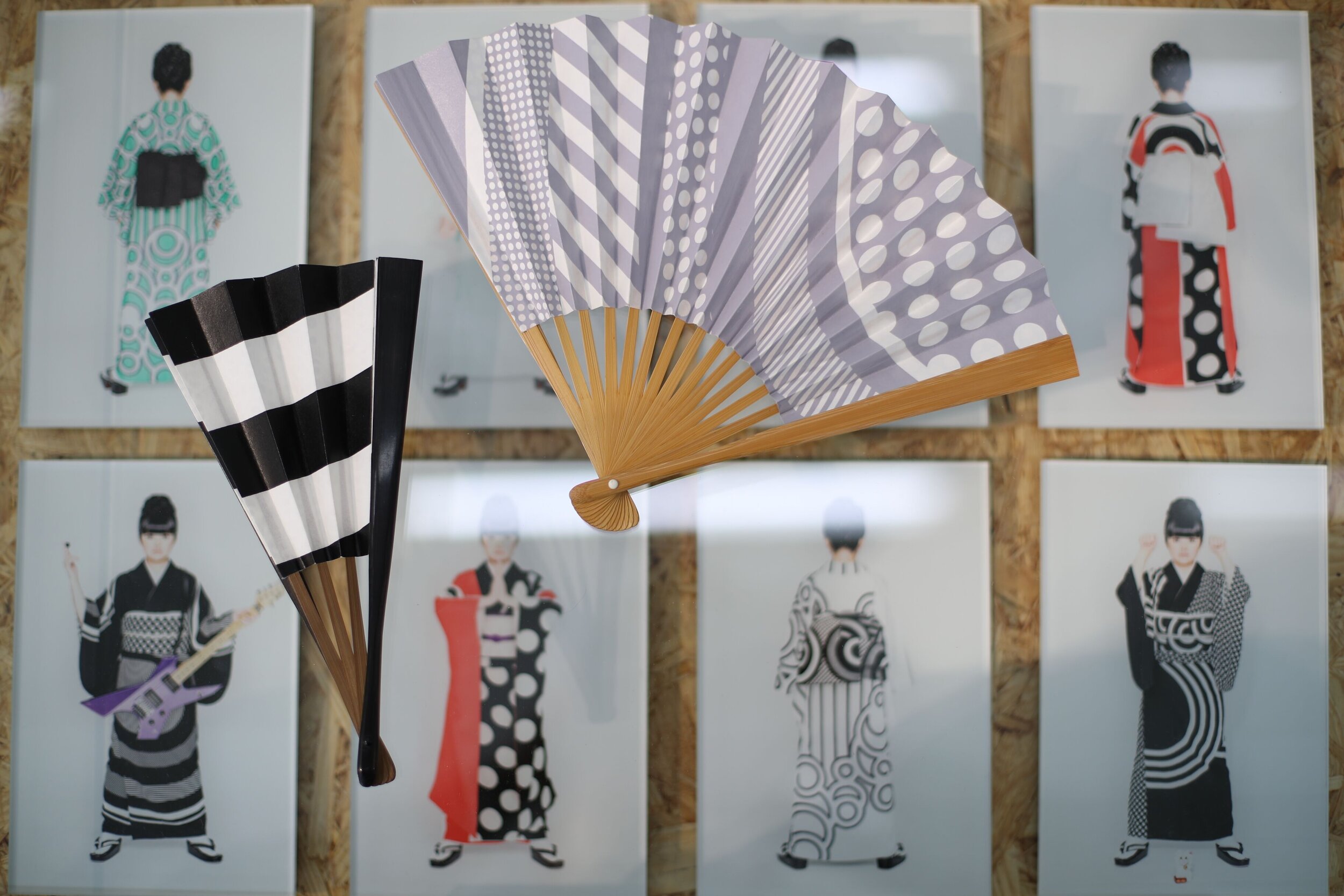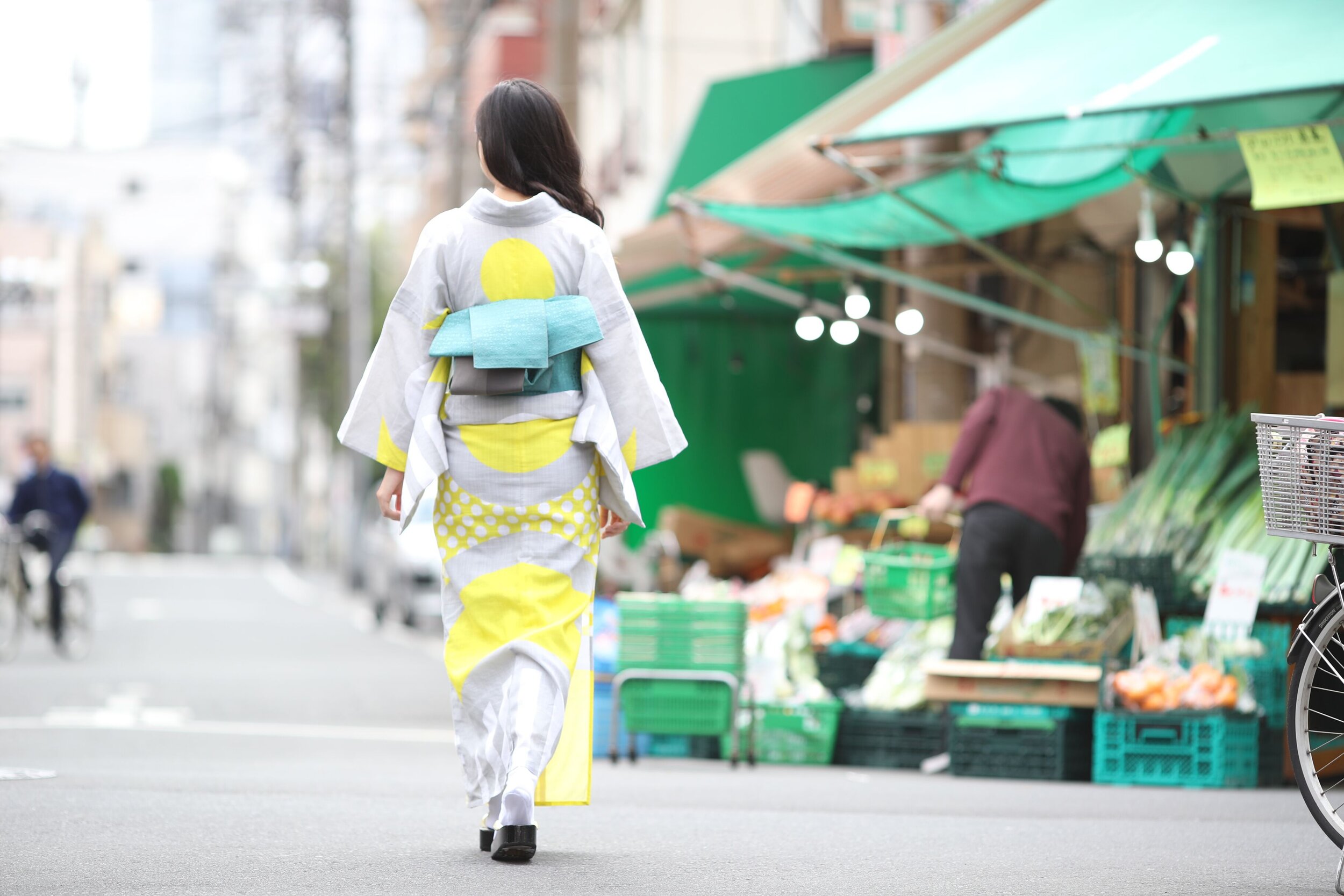when in tokyo…
Chokokuji
Started off this trip in Tokyo with something I’ve never done in any of my previous travel - Zazen, also known as Meditation. This was definitely a unique and inspiring experience for me. We visited Chokokuji, a Soto Zen Buddhist temple found in 1598. This temple is in Azabu Juban, an area of Tokyo where there are many high-end shops. It is a space where you can enjoy a quiet time. You won’t believe that you are in the middle of a big city. We started off by visiting the Hatto, which is the main hall of this temple, and walked towards the Hall where we practiced Zazen. The layout of the room is simple yet sophisticated, there are rows of benches facing each other with round cushions placed on top. We had a private session to practice Zazen with step by step guidance from a Monk. There are quite a few rules to follow, and it was fascinating to me because there are special ways to sit on the cushion, specific direction to turn and face during meditation, as well as the proper way to sit and breathe. In a way it allows me to feel mindless and it was quite an effective way to relax, some might use the term spiritual healing.
daigo
We visited one of the most famous vegetarian restaurants in Tokyo that opened in 1950, it is passed down from generations to generations and now it is run by the Fourth generation of the Nomura family. Daigo is considered a high end restaurant that offers a dining experience with all 5 of your senses. The restaurant is located within a beautiful Japanese garden at the foot of Mount Atago near Tokyo Tower. The style of the architecture is similar to a tea-house, where all the dining rooms are facing different parts of the zen garden. Guests can also reserve individual dining rooms to have more privacy and quiet time during their meal. It is quite a contrasting experience from the moment you enter the restaurant, suddenly, the noise and vibrant lifestyle of the city has been tuned out and you’ve entered an exquisite retreat. The menu changes regularly with the seasons and when I visited I was able to enjoy the autumn menu. The delicious dishes reproduced the appearance of autumn tastes and it felt as though I was sweeping up the fallen leaves with the use of colorful maple leaves, shiitake mushrooms, chestnuts, and sweet potatoes. I really love the food, ambience, scenic view, and hospitality that Daigo has to offer.
The Mandarin Oriental, Tokyo
Mandarin Oriental, Tokyo is a five-star luxury hotel in the heart of Tokyo city. It is not only famous for the innovative and Michelin star restaurants, but its Spa is also known to be one of the the best in Tokyo. Located on the 37th floor, the Spa at Mandarin Oriental, Tokyo offers a panoramic view of the city. It’s got an impressive Spa and Wellness program that is curated by their expert therapists. The treatment room and the spa pool are probably my favorite spots at the hotel. Both with an unobstructed view of the city and facing the tallest building – TOKYO SKYTREE. I was pampered with a 110 mins treatment called Totally Tokyo. All the treatments here begins with a foot ritual, that symbolizes the meaning of washing away the material world. Followed by a personal consultation with a therapist, then it is time to relax and enjoy the treatment.
There are 157 state rooms and 22 suites at Mandarin Oriental, Tokyo and all of them with an incredible view of the city. Blending contemporary style with a touch of Japanese design, the living space in each room brings a sense of warmth and comfort the moment you enter. I really enjoy the attention to details, the furniture choices, and the color palette in the room.
L'algorithme
The meaning of algorithm is “solution.” L’Algorithme is a counter-style restaurant with only eight seats and it has been awarded one Michelin star for its unique French fusion cuisine.
The restaurant’s concept is the “French equation.” Chef Hiroki Fukaya has learned a variety of French dishes at restaurants in Paris and Tokyo. His restaurant embodies the best “solution” by combining and refining the techniques and senses he has learned and which he presents to us through the elements of the restaurant such as the food, wine, and space. Chef Fukaya only serves a “chef’s selection” for lunch and dinner. He carefully selects the the ingredients and considers the best way to present them through the temperature, method of preparation and composition. Drinks are only paired in accordance with the dishes. The “solution-algorithm” that Chef Fukaya has derived is a fascinating and unforgettable experience!
Tranquilitea by Charen
Japanese Tea Ceremony, traditionally known as Chanoyu, is the representation of Japanese hospitality. I was invited to a special residence that belonged to an old family - the Daimyo (Lord of Samurai) family line of the Edo era which spans over 400 years of history. The design of this traditional home is beautiful, we spent most of the time learning about Tea making in the tatami Tea room. To me, it was an interesting experience to enter the Tea room, as seen in the first photo, the small sliding door is the traditional entry. The reason behind using such a small sliding door is that back in the days, Samurais will have to leave their swords outside before entering a Tea Ceremony. To symbolize entering a peaceful space to unwind and relax.
The lifelong practice of tea ceremony is known as Chado, or the Way of Tea. The goal behind preserving this tradition for thousands of years is a lot more than just savoring a good cup of Matcha. There are depths and symbolic meanings to each step of perfecting Tea making and this entire experience. Harmony, Respect, Purity, and Tranquility are all the elements in which a Tea Ceremony is trying to achieve. I’m so happy that I got to experience and learn about one of the most important aspects of Japanese culture. Besides the Tea Ceremony, Tranquilitea also offers Kimono fitting as well as custom made bento boxes, guests can easily enjoy half a day at this facility.
Akasaka Kien
For those of you who enjoy a good authentic Japanese Cuisine, Akasaka Kien won’t disappoint! This is a small restaurant that only has 2 private dining rooms and a few spots at the counter. I highly recommend making a reservation when planning your trip. On the day I went I had one of autumn’s premium ingredients, the mushroom known as “matsutake.” The main dish was “wagyu” (Japanese beef) and I finished off my meal with another autumn flavor in the pacific saury rice. I was served a total of nine dishes and I enjoyed my taste of autumn in Tokyo.
Yanagihara Cooking School
This trip to Tokyo is all about trying something new, I participated in a cooking class at the Yanagihara Cooking School in Akasaka District with Chef Naoyuki Yanagihara, who studied fermented foods at Tokyo University of Agriculture. He is a distinguished chef who has inherited traditional Japanese cooking techniques that have been passed down since the Edo period. Various techniques that his ancestors created in the early 19th century are still handed down to chefs in famous Tokyo restaurants as one of the schools of cooking. Chef Yanagihara is currently the Vice President of Yanagihara Cooking School and is also active as a chef. What I loved about our lesson is that Chef Yanagihara starts the course with background information about ingredients that we were going to use. He gave a powerpoint introduction with images and videos about the history of Japanese cuisine and the origins of the ingredients. He taught me how to make “dashi,” a soup/cooking broth that is an essential element of Japanese cooking and is made using kelp and bonito. The broth that is extracted from the kelp can have varying tastes depending on where the kelp is harvested from in Japan. I was surprised by all the different tastes! This time I made sushi rolls using “dashi.” Chef Yanagihara is very patient, he goes through each step slowly making sure that you’re able to follow along. Most importantly, the dishes that he teaches can be replicated at home, and it tastes very good!
Fushikino
The name of the restaurant, Fushikino, was a word used by the tea ceremony master Sennorikyu and means “something unexpected” or “something new.” Fushikino opened in 2011 and it has kept one Michelin star for eight consecutive years since 2012. It is only open for dinner and the chef serves a seven or nine Kyoto-style kaiseki fixed course.
Customers also have the option of enjoying a Japanese sake pairing with their dinner. You can enjoy a different sake paired with each dish. The sake sommelier carefully selects sake from all over Japan. The sake is served at varying temperatures such as cold, lukewarm or hot in order to enhance the taste of the food. It is also served in glasses of varying designs and styles, from works by young ceramic artists to collector’s items by living national treasures. You are not only enjoying just the sake pairing but also experiencing art and culture.
The oldest sake glass the owner has is over 900 years old! He carefully chooses a different sake glass according to each dish and the color and characteristics of the sake. It was an incredibly satisfying dinner experience. All the dishes were beautifully presented and delicious. If you are a connoisseur of good food, I highly recommend Fushikino. I will definitely go again the next time I am in Tokyo!
Morning Art Yoga at Hotel Gajoen Tokyo
Hotel Gajoen is an over 90-year-old Japanese modern luxury hotel that is also known as the “museum hotel” because it is filled with beautiful Japanese art. There are even art works in the bathrooms! This time I took part in the morning yoga class in a tatami room surrounded by art on the ceiling and the walls. It is not well known, but the scent of tatami has the same relaxing effect element as that of a forest bath. So it is a perfect fit for the deep breathing that is done in yoga.
The instructor can hold the class in English and adjust the class in accordance with your level. Both beginners and advanced students can feel comfortable signing up for this class. Even if you are not a guest at Hotel Gajoen you may sign up to take the class. After finishing the one hour yoga class, you can have breakfast in the Executive Lounge where usually only guests of the hotel have access to. It was a wonderful start to the day with a healthy and luxurious breakfast of fresh vegetables, green smoothies and carefully selected yoghurt.
TAKAHASHI HIROKO
One of the most popular activities when visiting Japan is to try out a Traditional Kimono, but have you seen a Modern Style Kimono? Takahashi Hiroko is a well known artist and designer who makes innovative modern style Kimono while preserving traditional ideas. She mixes geometric shapes and works with pop colors contrast, her Kimono designs are not only pleasing to the eyes but also looks fantastic when it’s put on. After dressing up, we went to some popular spots – Nihombashi and Asakusa - to take photos, and there are lots of other girls wearing a traditional kimono, and I was so happy to see that my outfit stood out from the crowd!
Shiseido cle de peau Beaute
Shiseido, with its headquarters in Ginza, is undoubtedly one of the most famous and trusted Japanese skincare brands and, among its brands, Cle de Peau Beaute (CPB) is known as a high-end brand. First released in 1982, Cle de Peau Beaute means “the key to beautiful skin.” Among the salons operated by CPB, the Ginza salon and the Shinjuku salon are known all over Japan as the “god hand” salons. This time I went to the Shinjuku salon where I enjoyed a 100 minutes facial treatment. This is a very popular treatment that specializes in improving lymphatic flow. CPB has its own original skin diagnosis service that it uses before the treatment in order to provide optimal treatment for each individual. Travel and skin care are closely related. When I travel, my skin changes due to the air, weather and other various factors. On this day I found out that my skin was a little dry so I chose a high-moisturizing treatment.
In addition, using careful consideration that is very Japanese, CPB is unique because it pays close attention such things as the comfort of the treatment table as well as the feel and scent of the towels. CPB also sells makeup products so following the treatment you can try their makeup products. If you wish to, you can receive advice from a Shiseido makeup artist who will also do your makeup. What a way to end a wonderful day.
#Tokyo_timelesstemptations #sponsored


